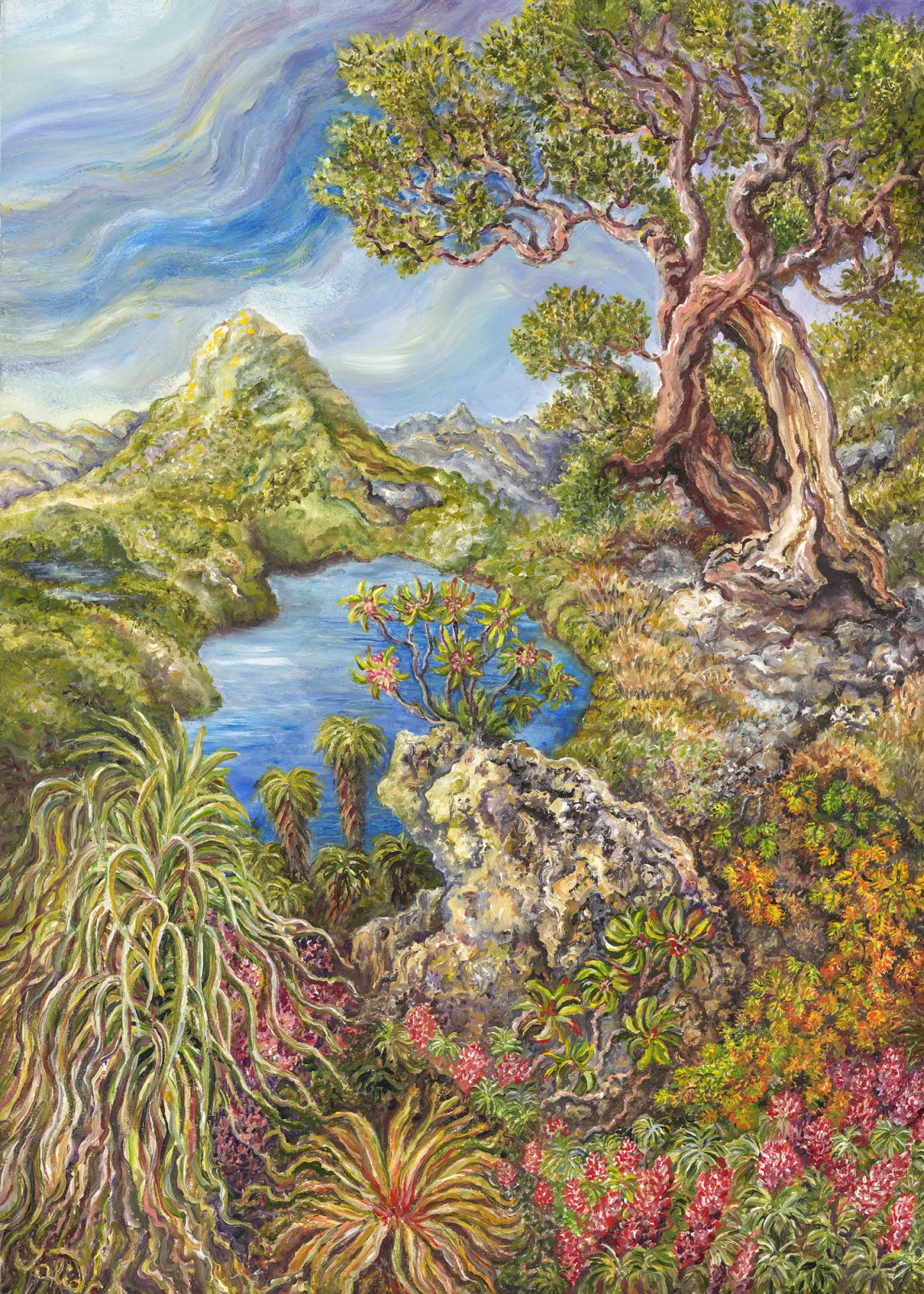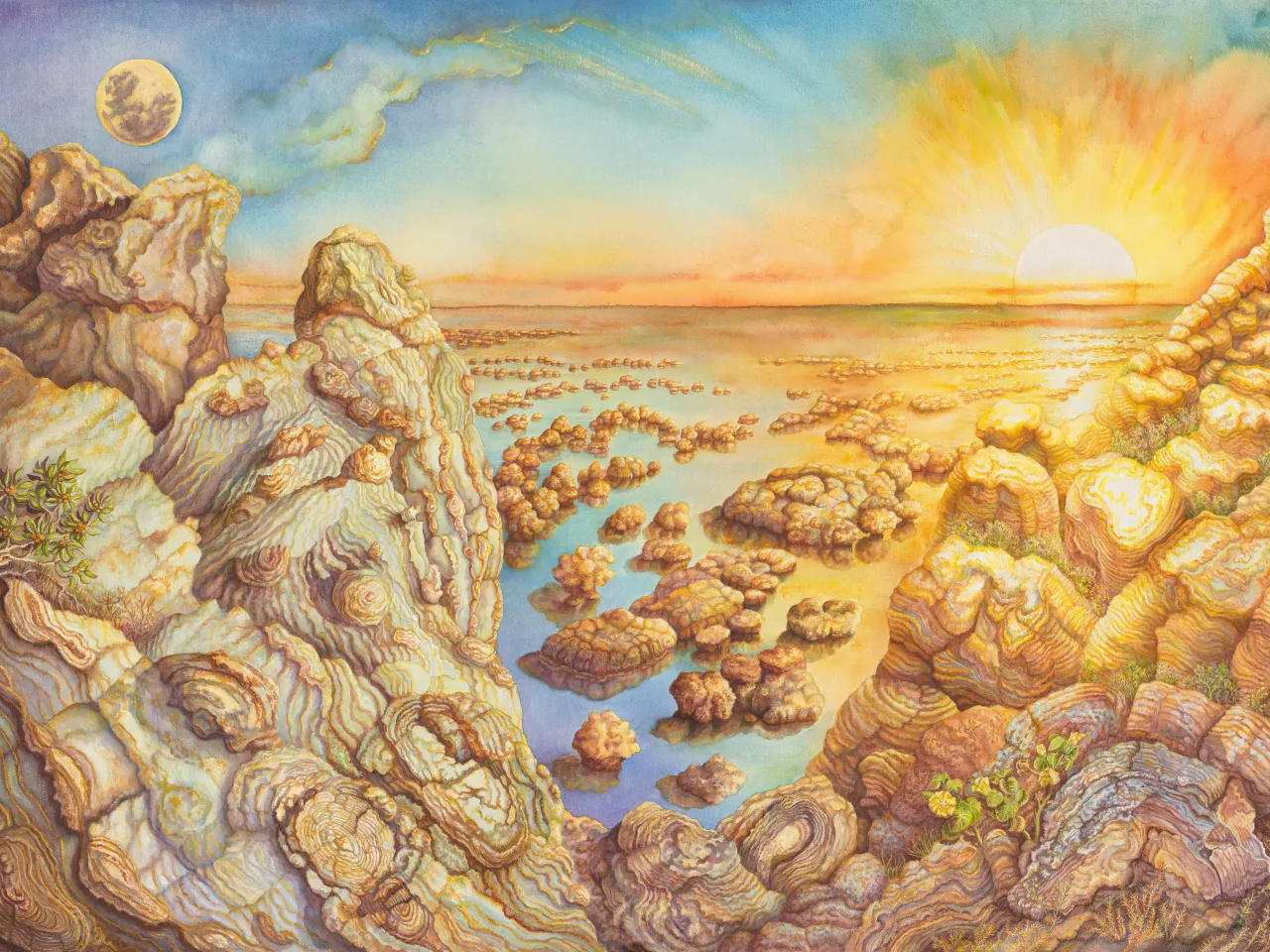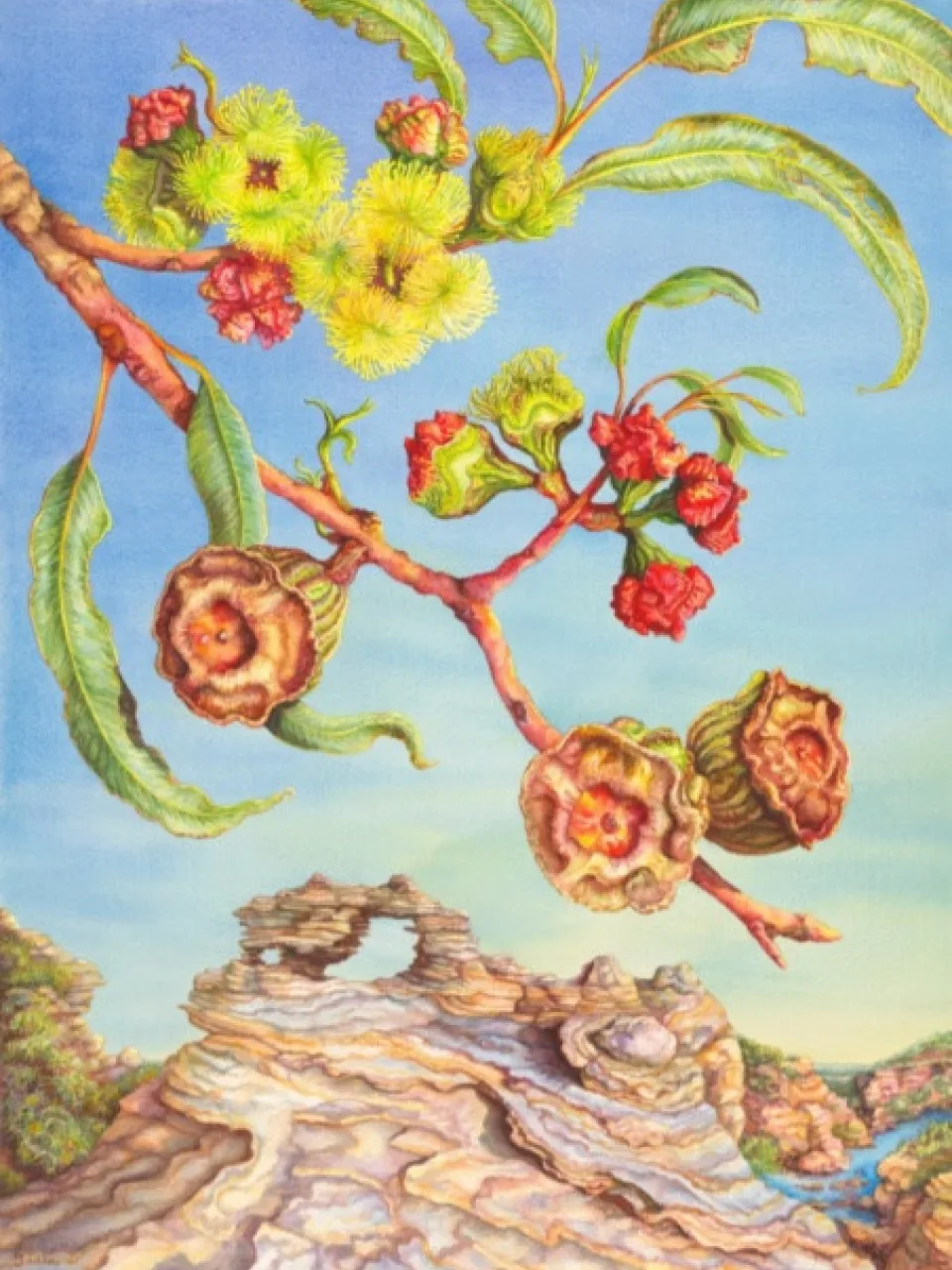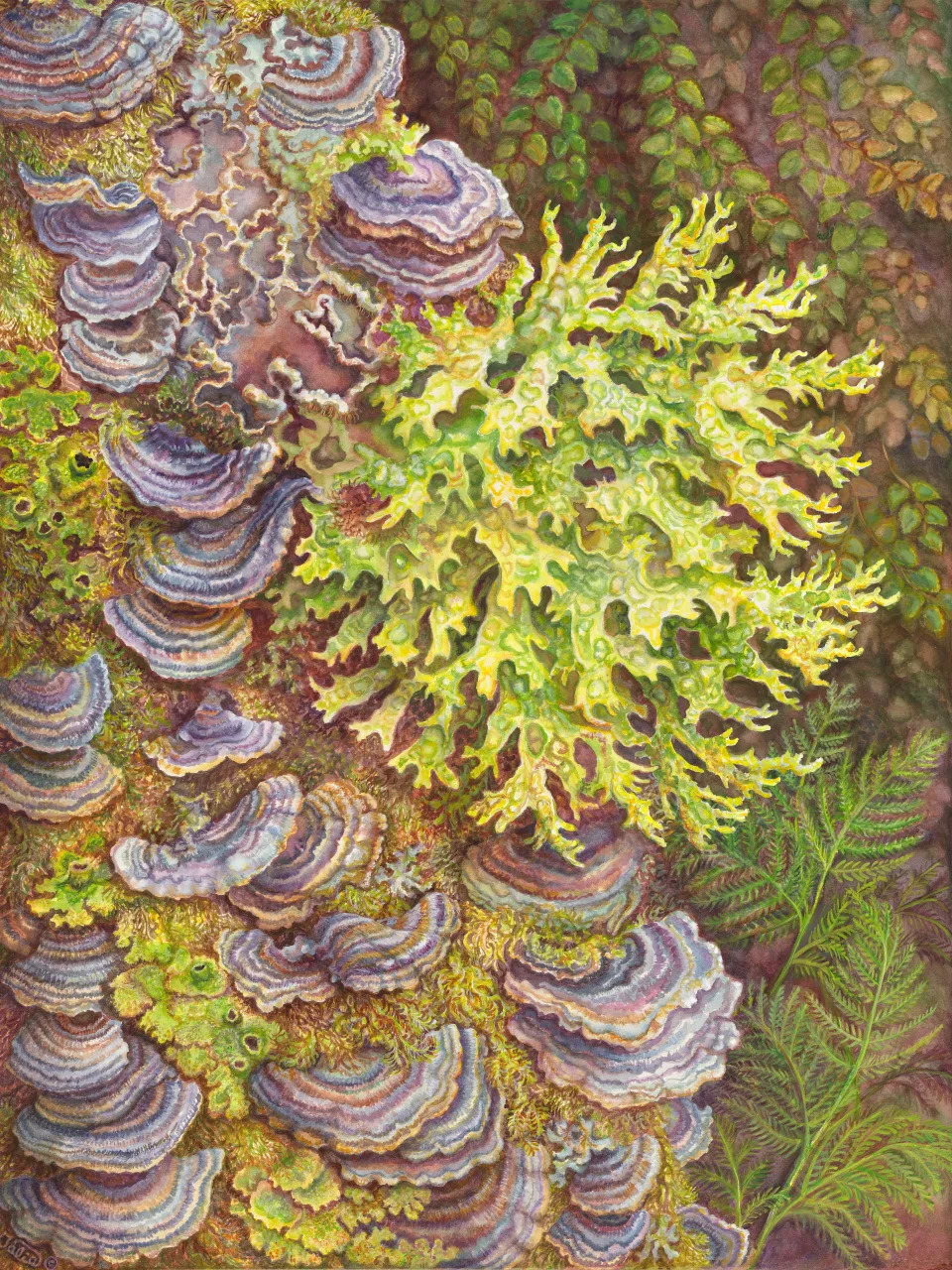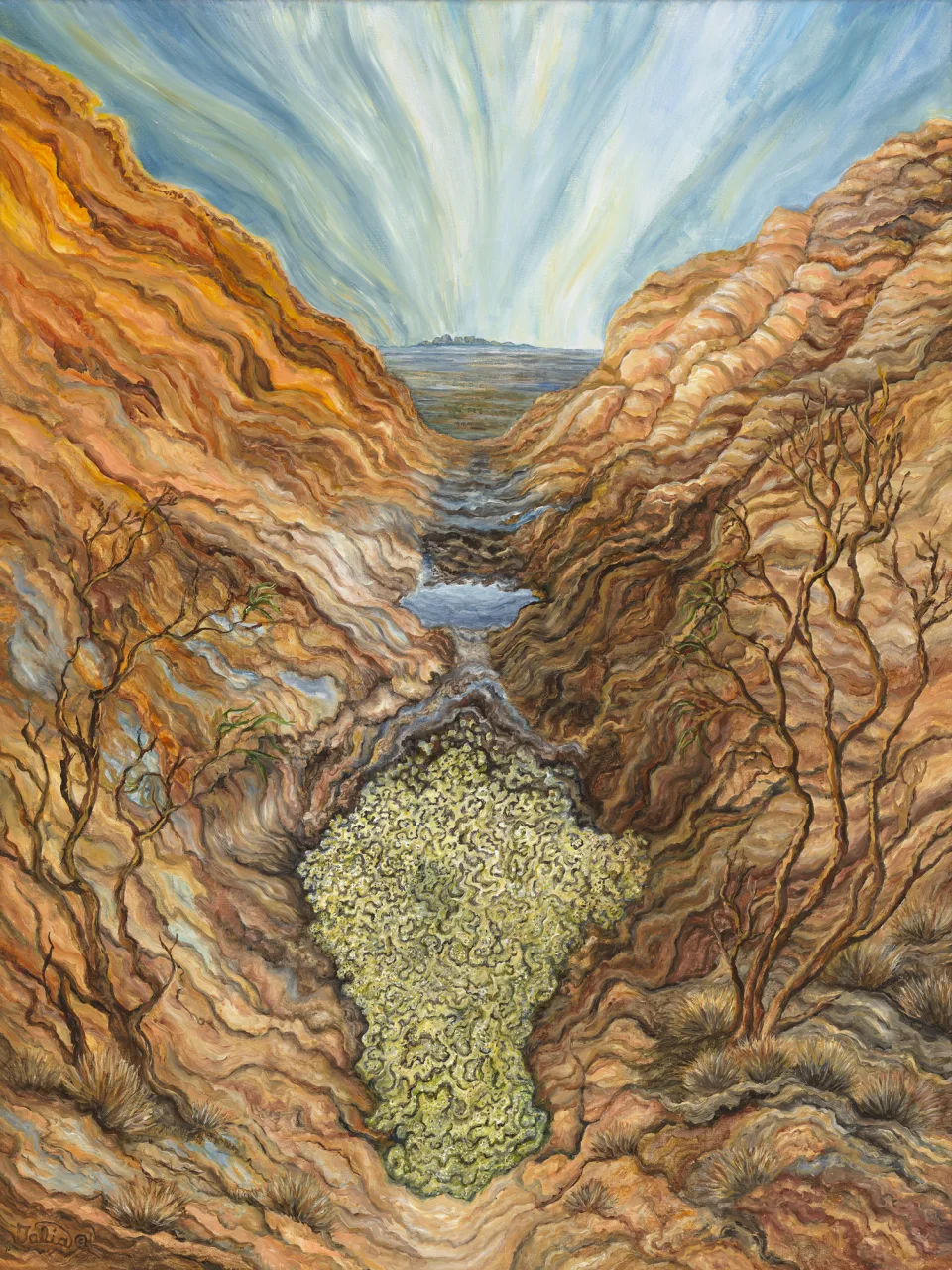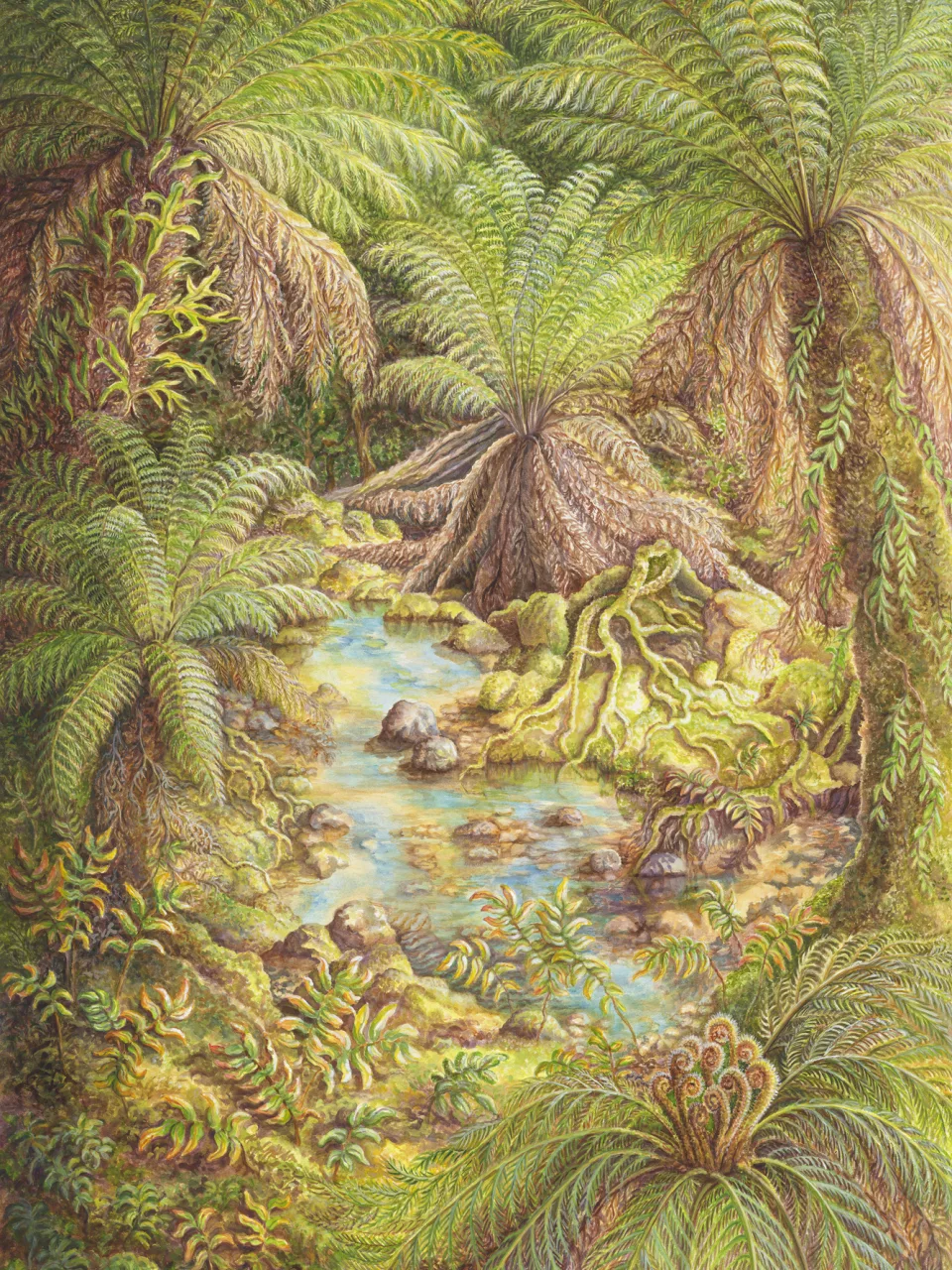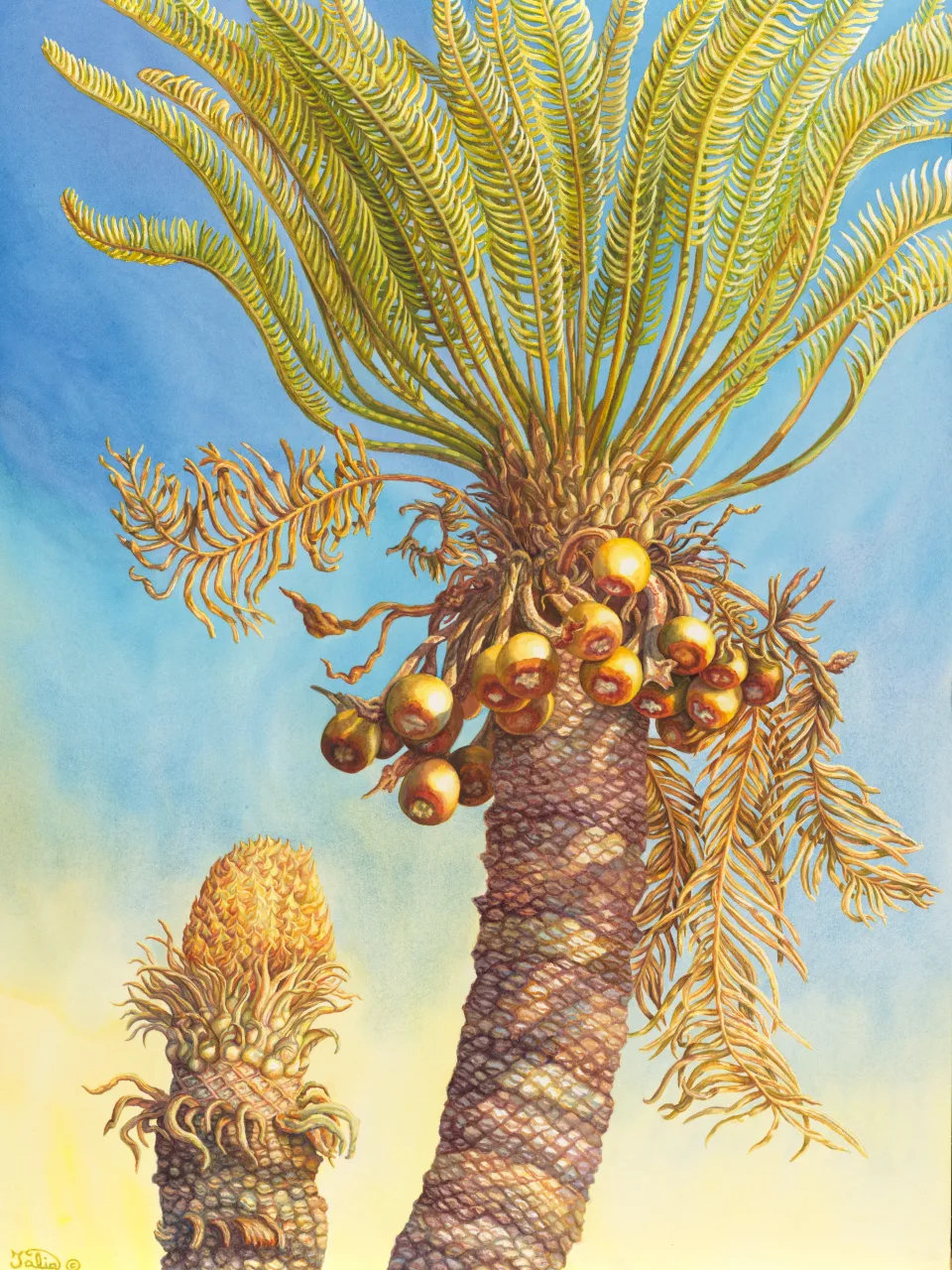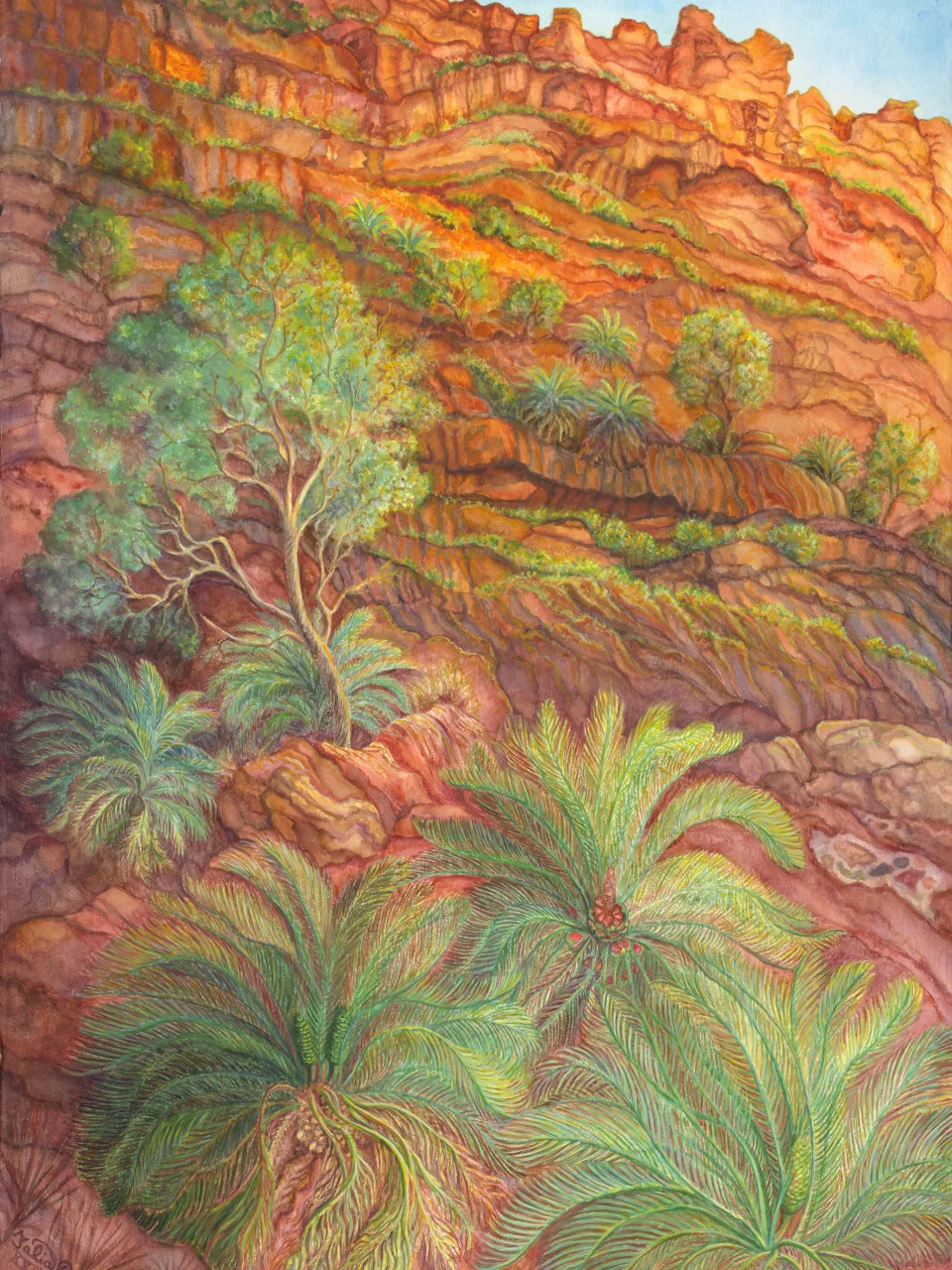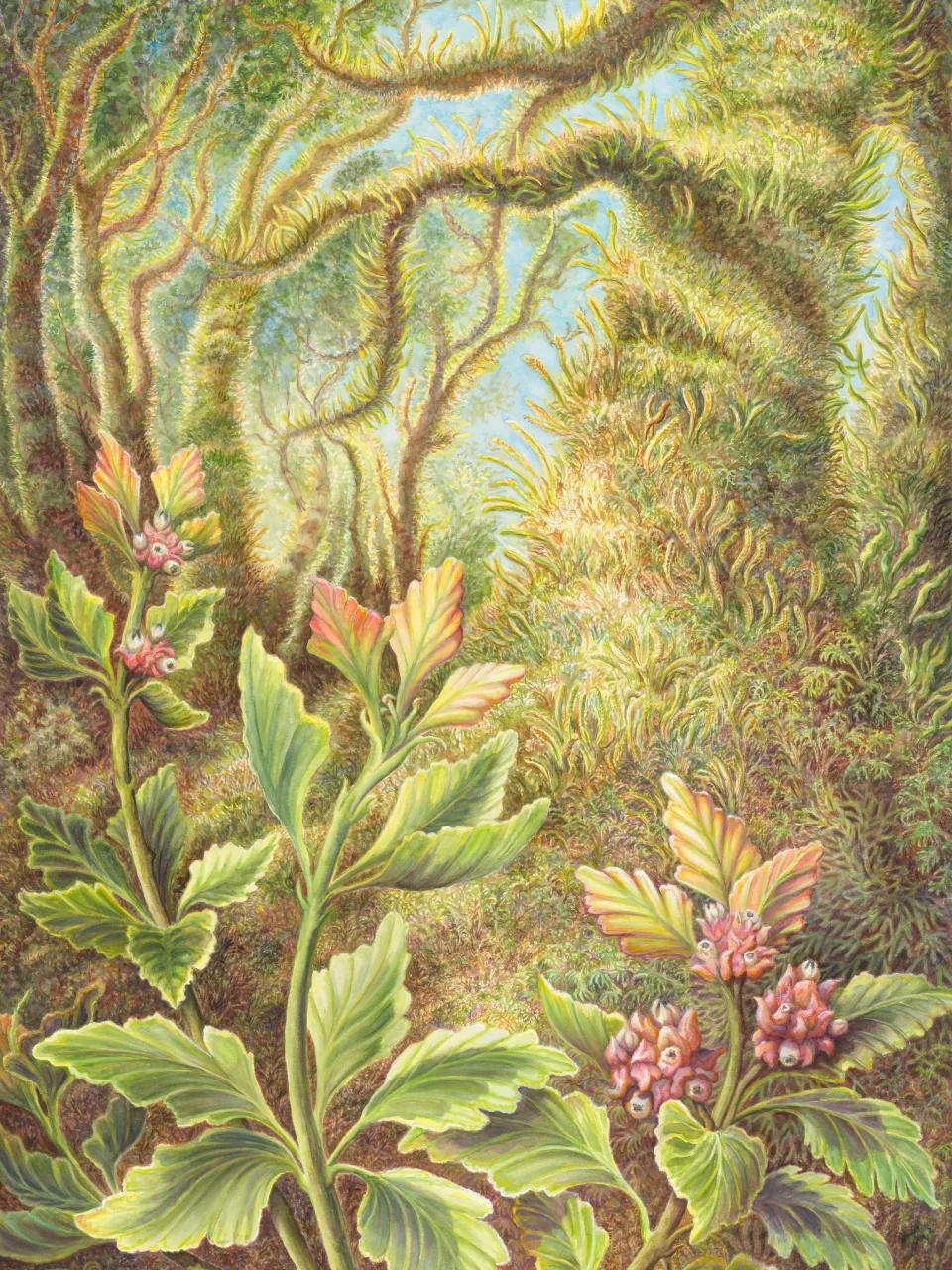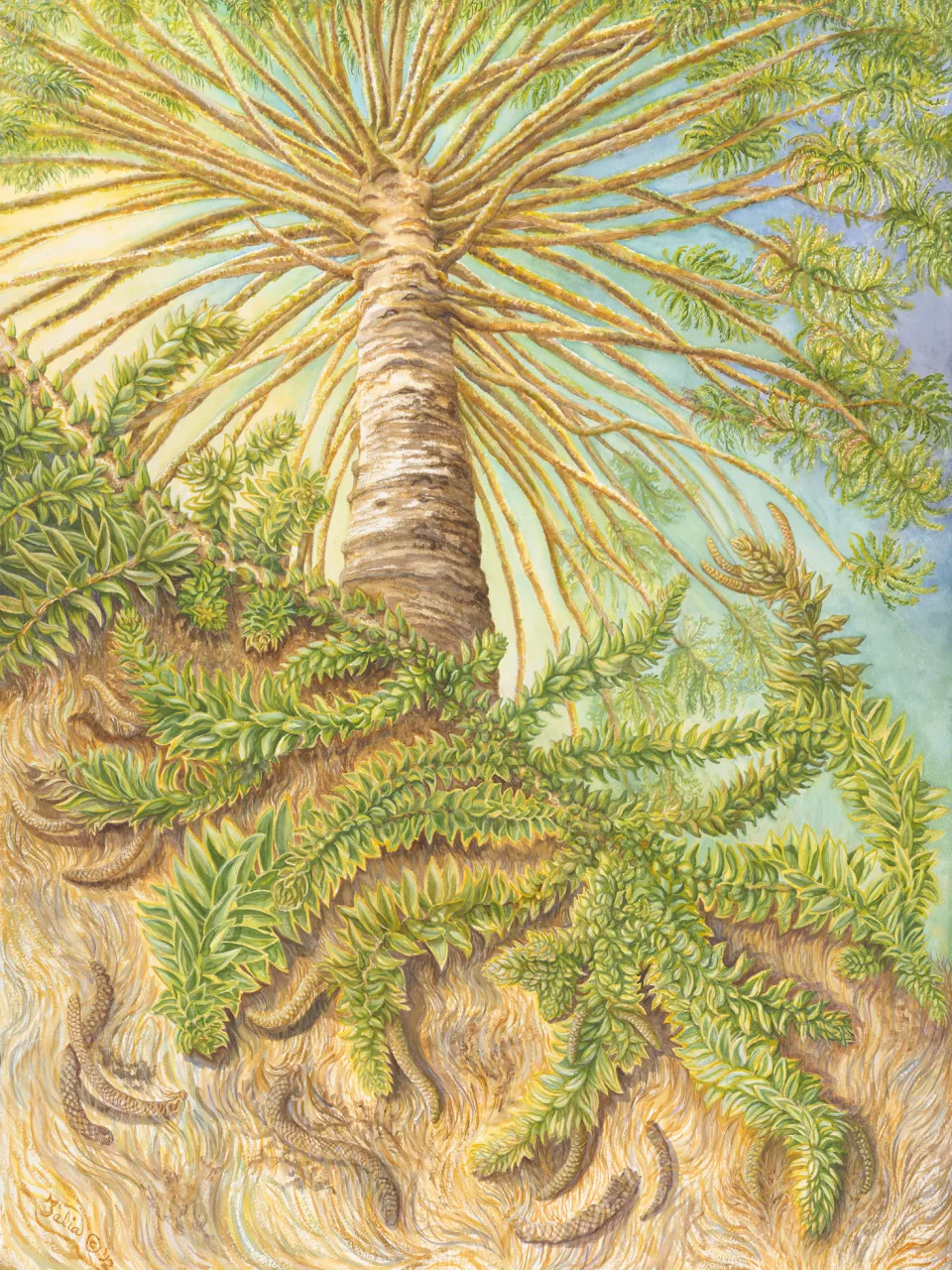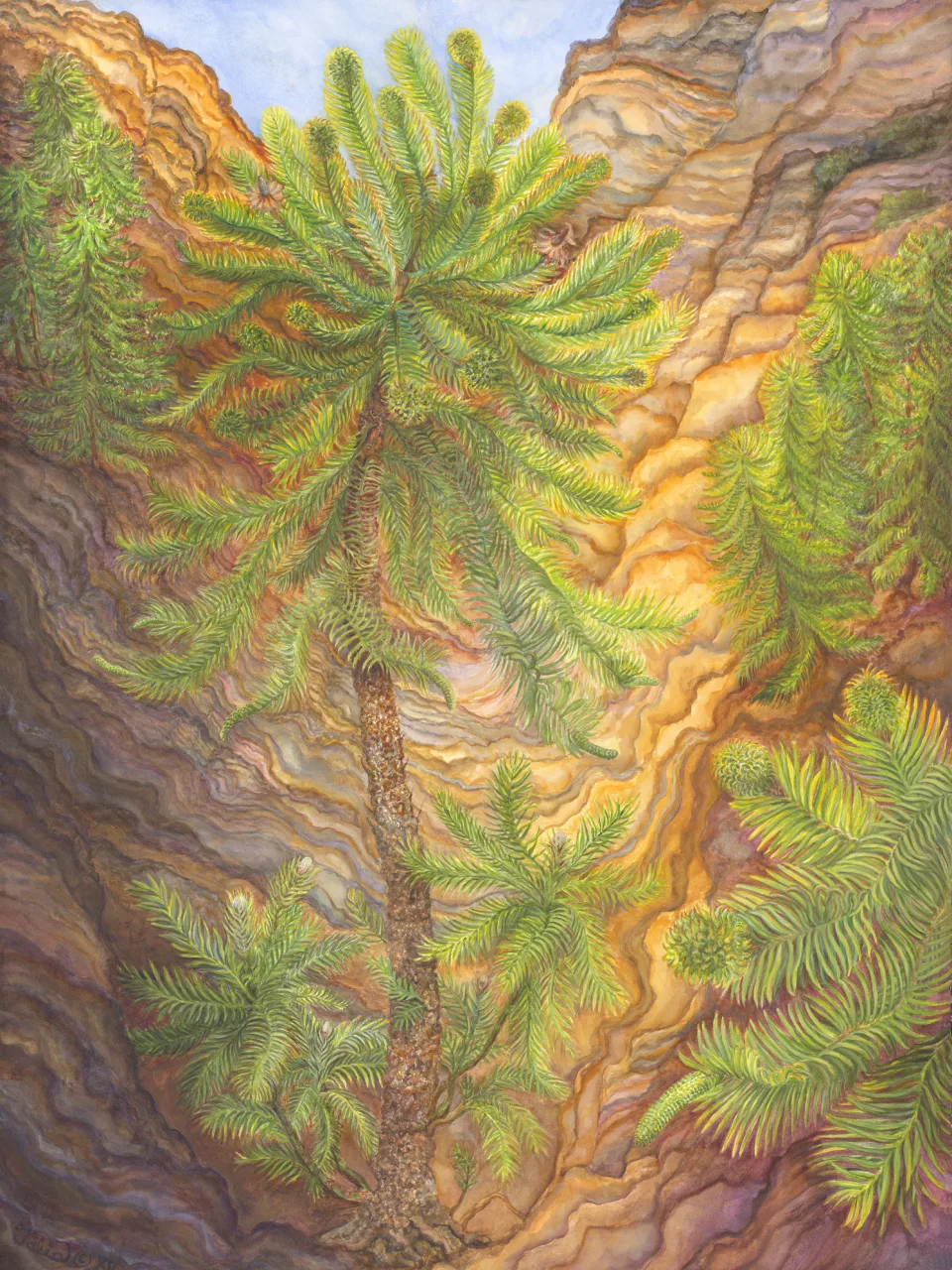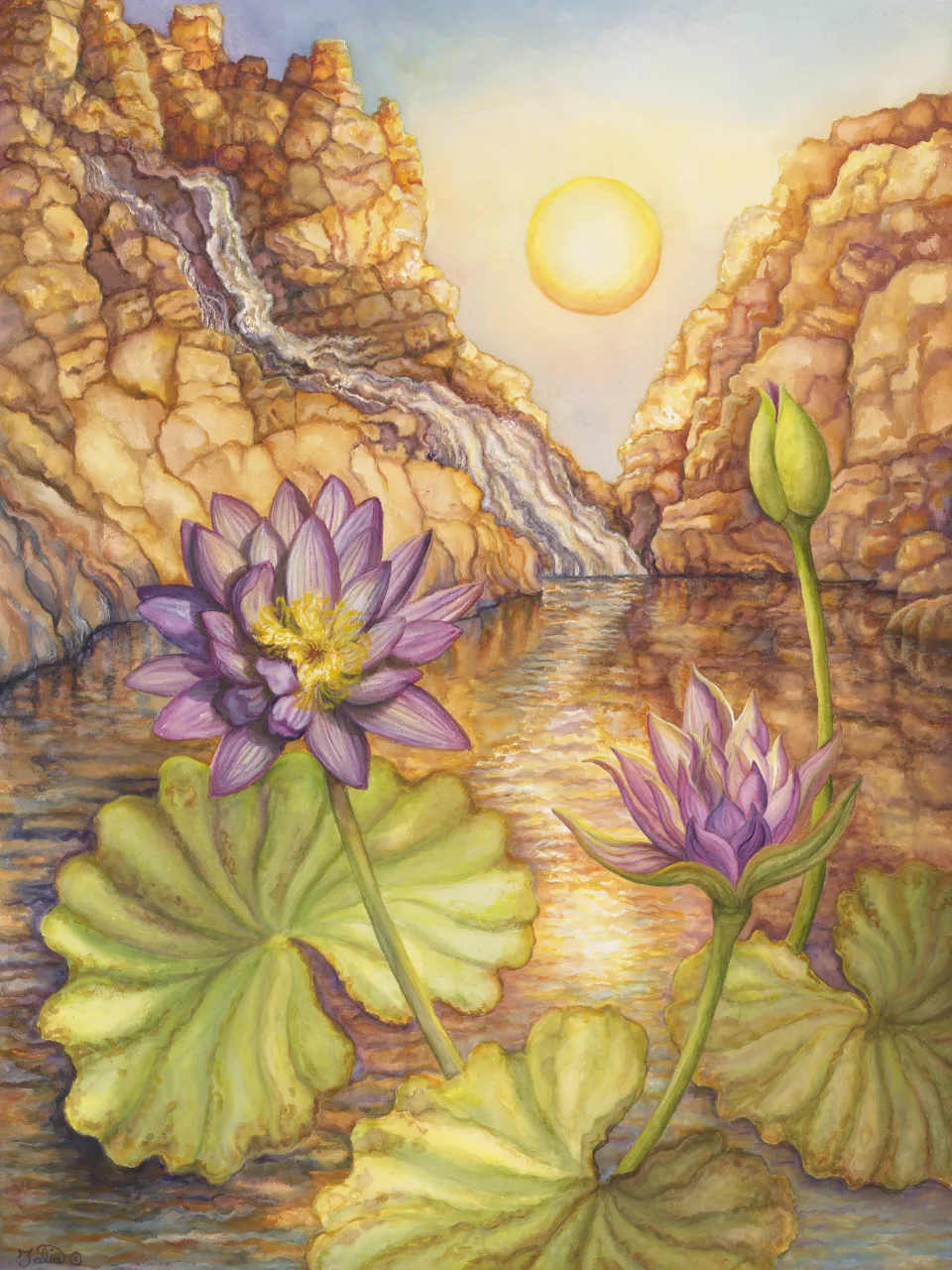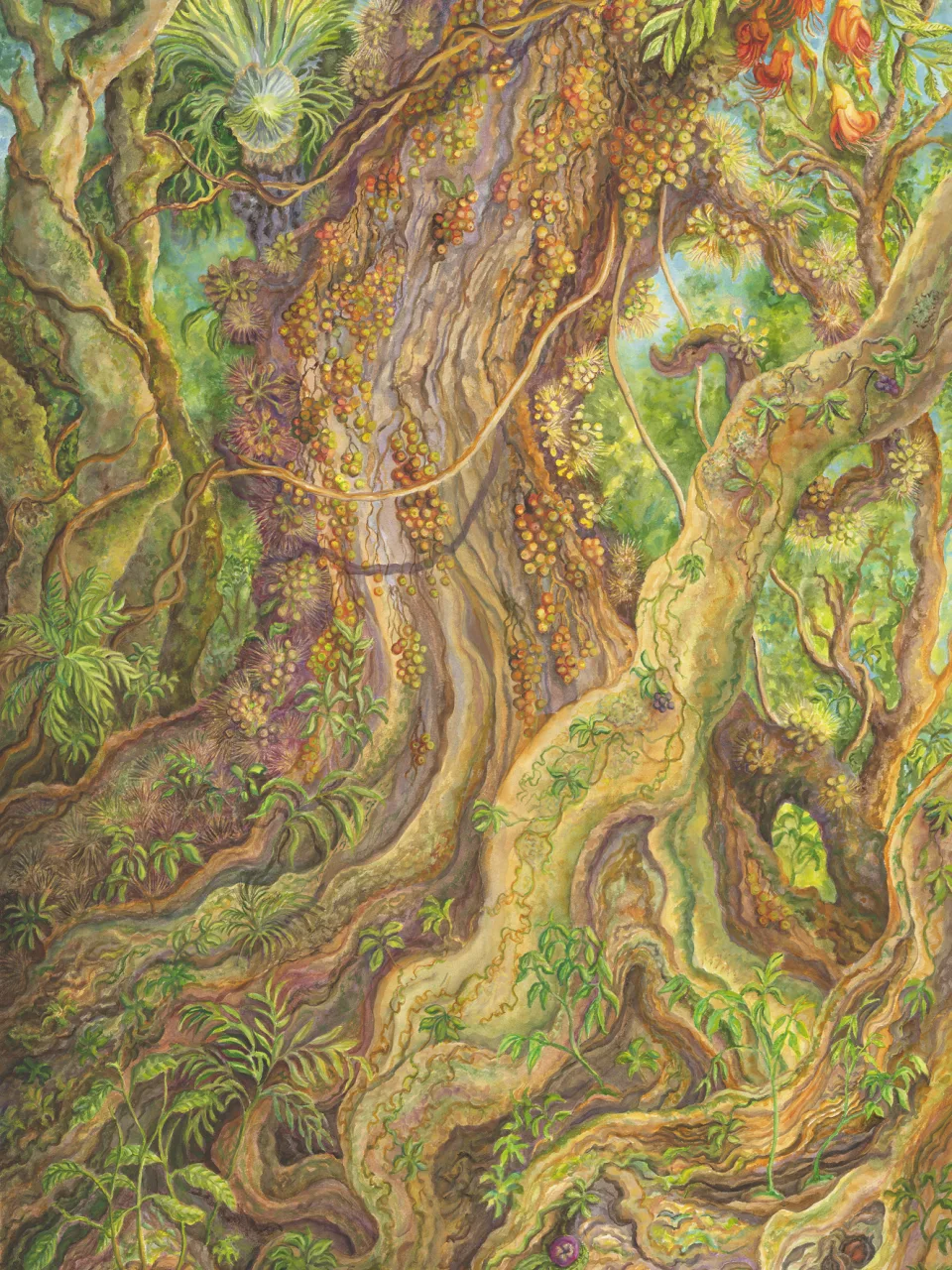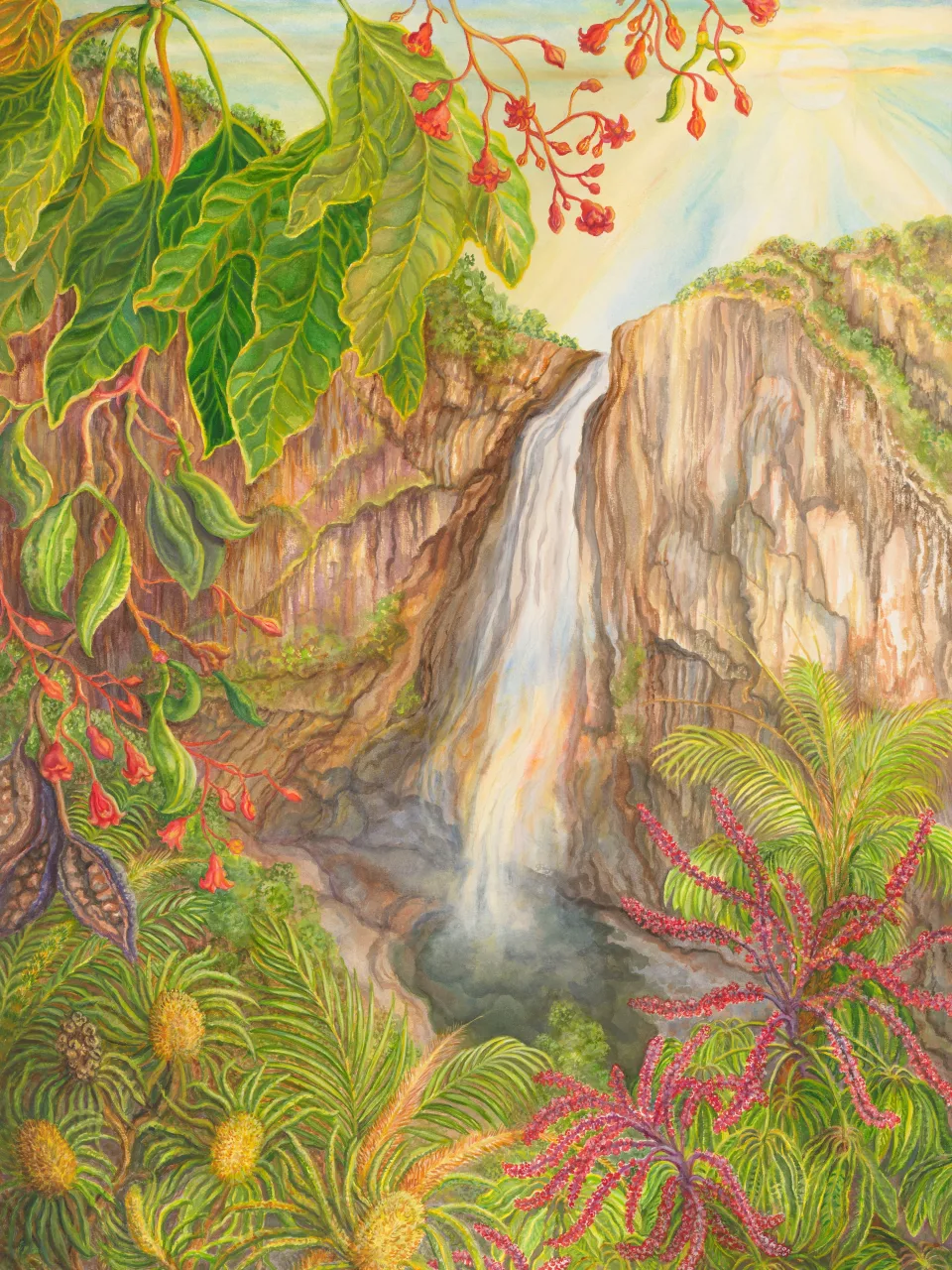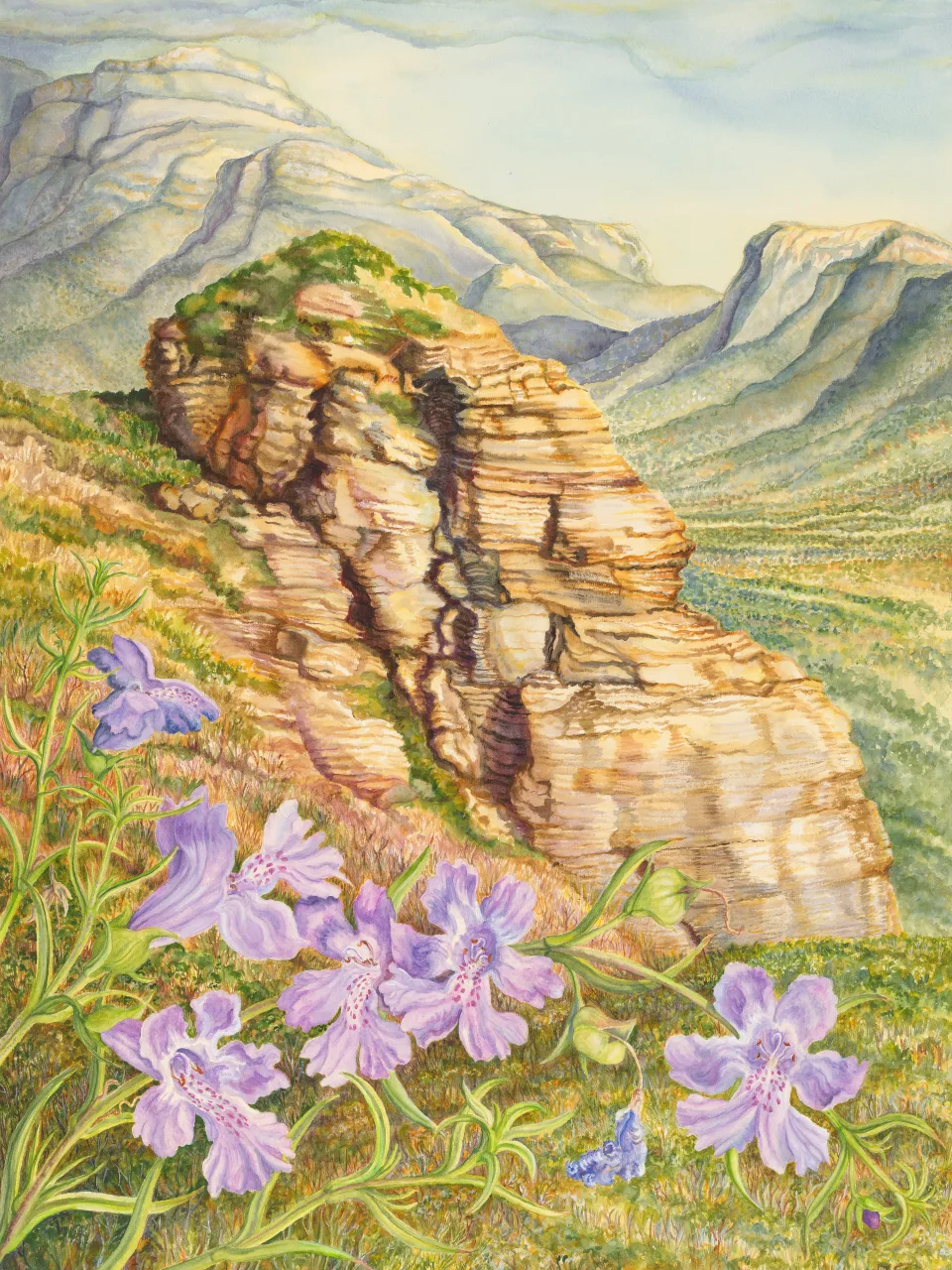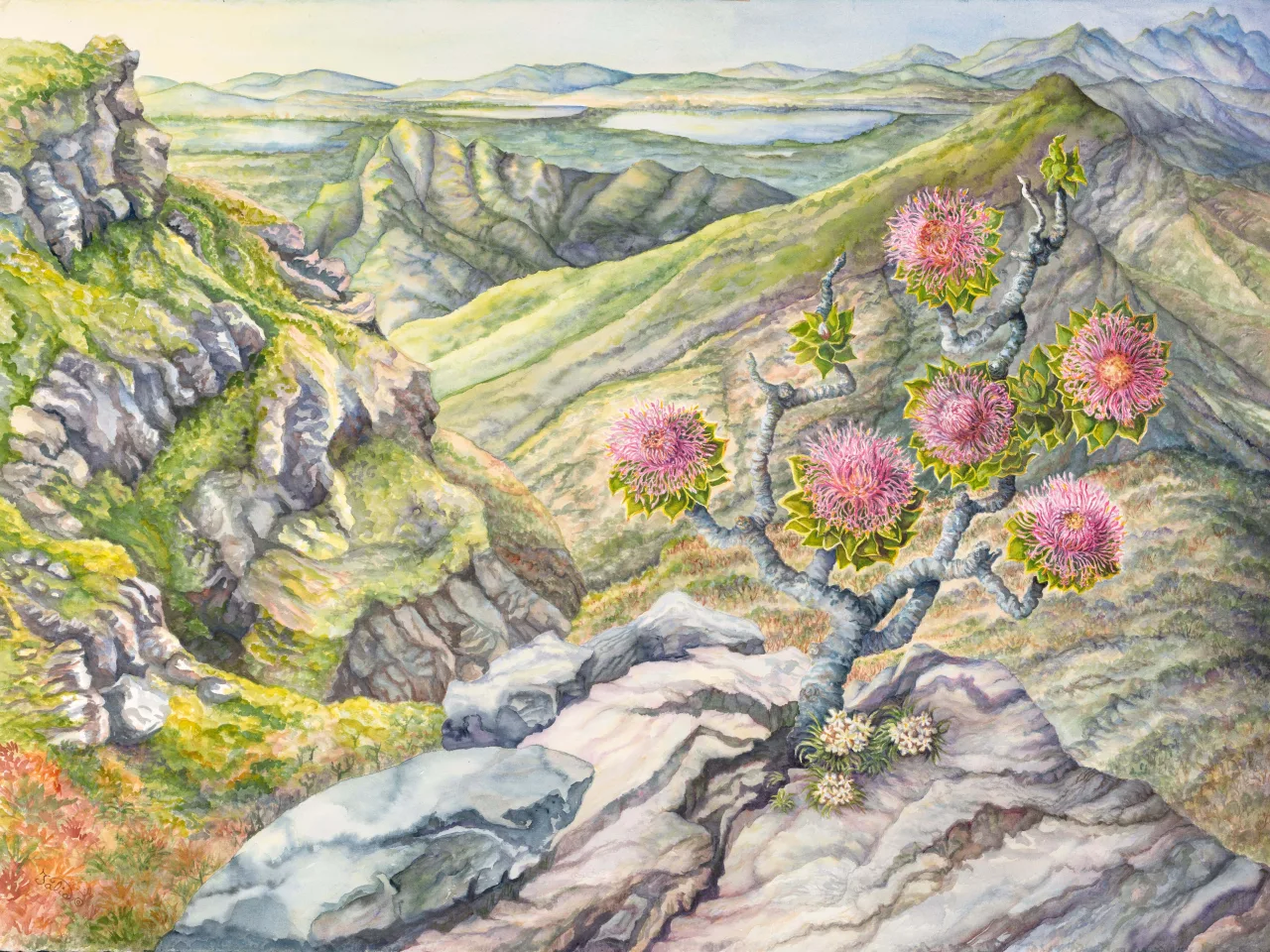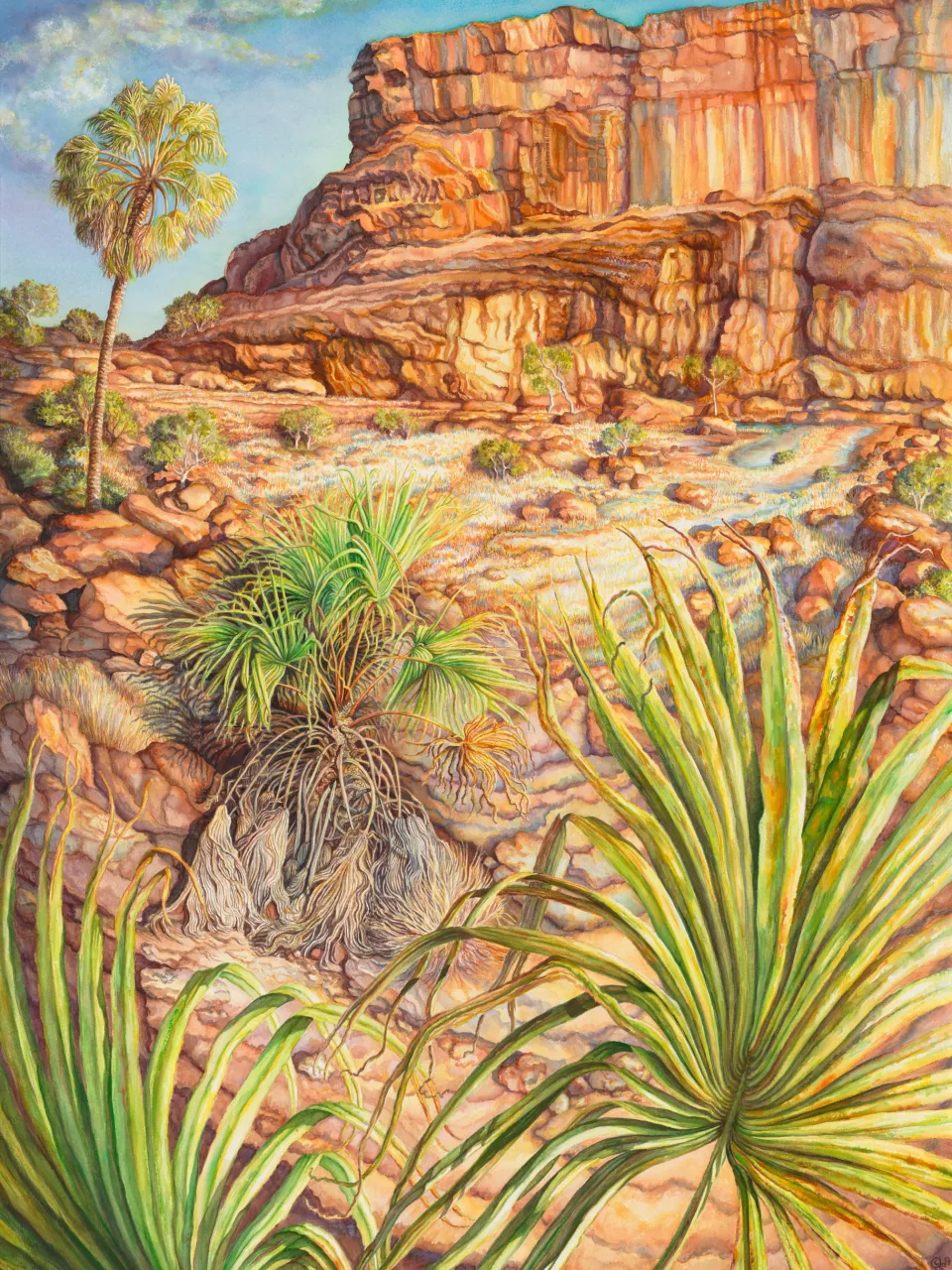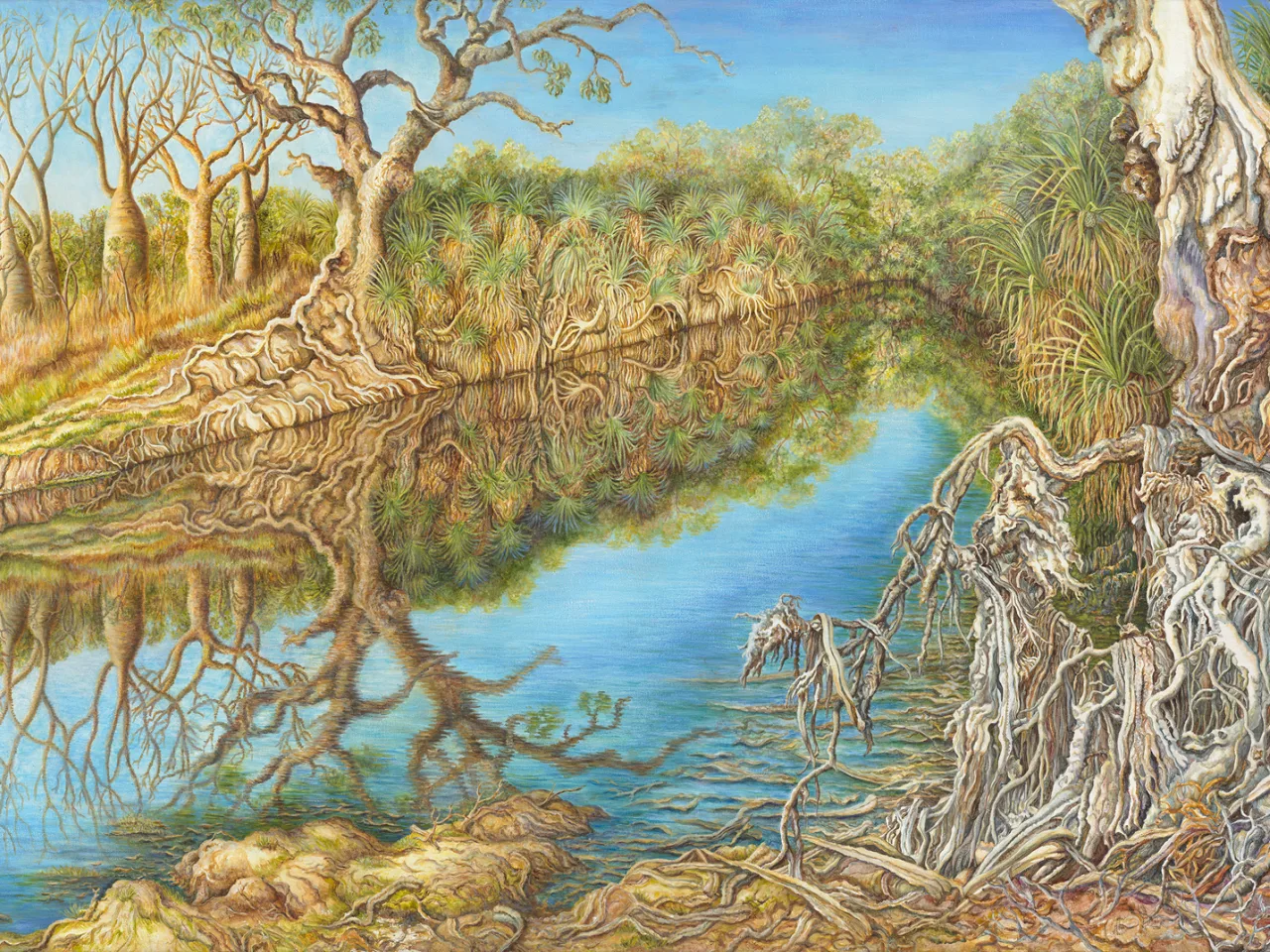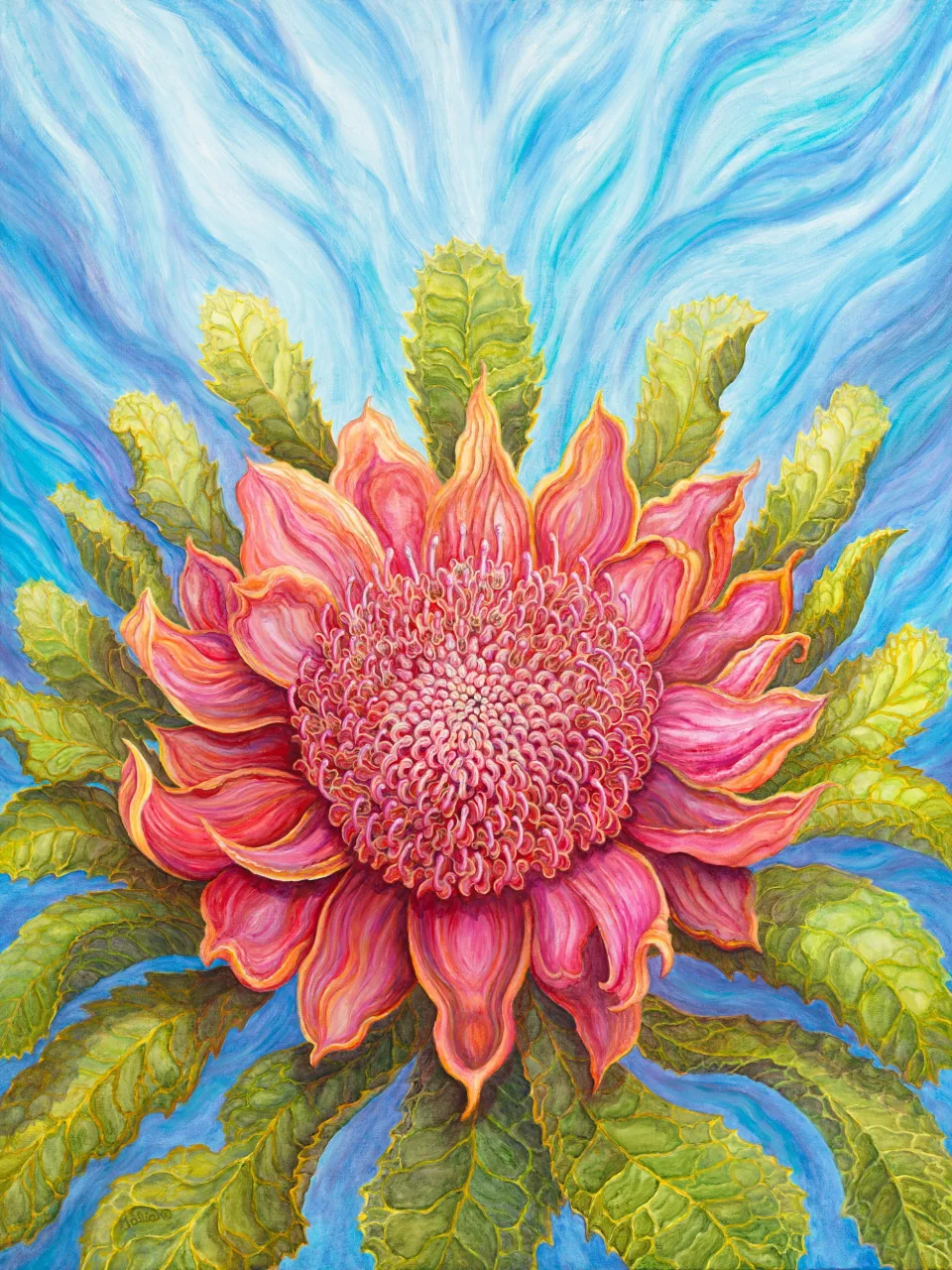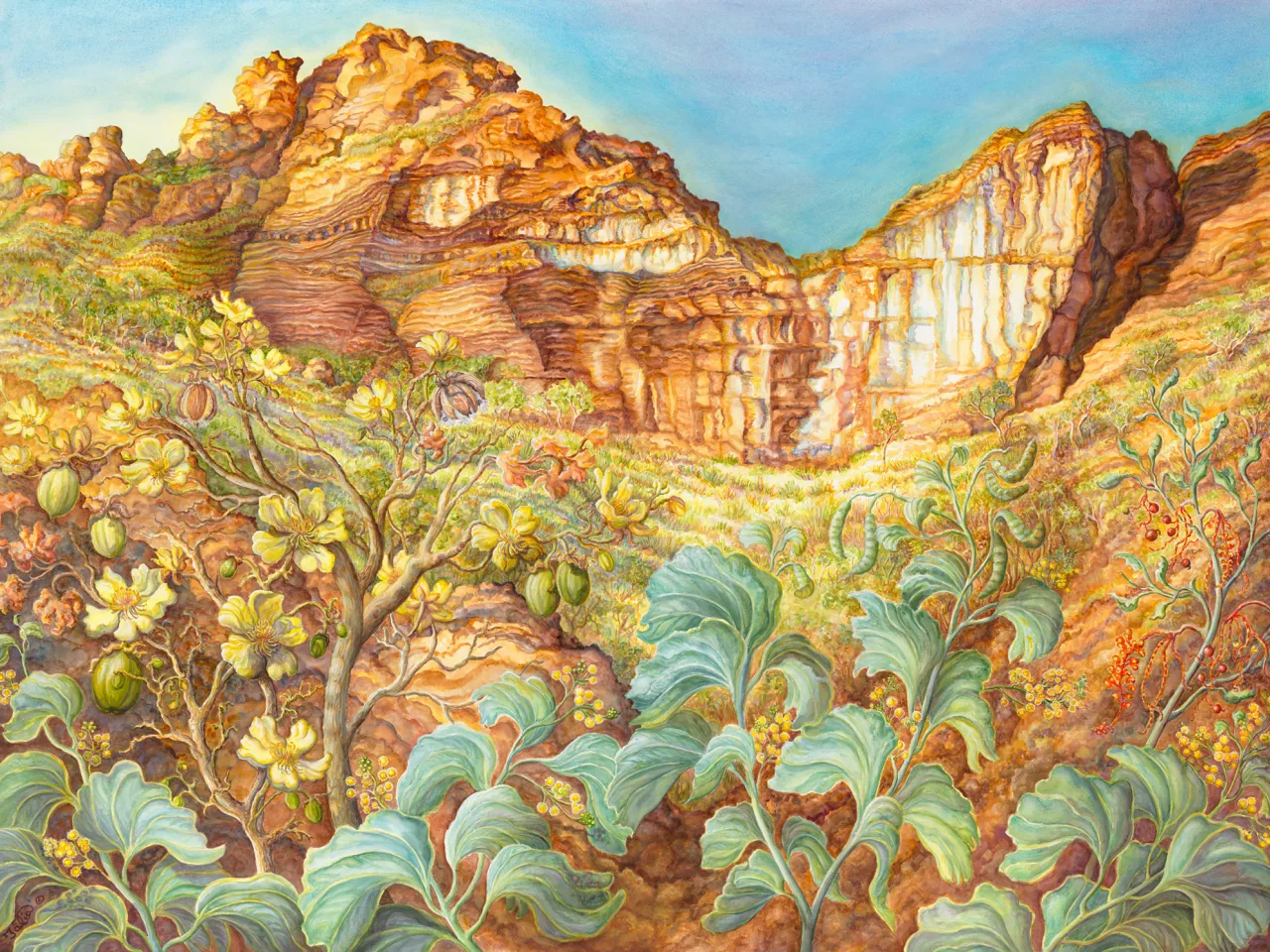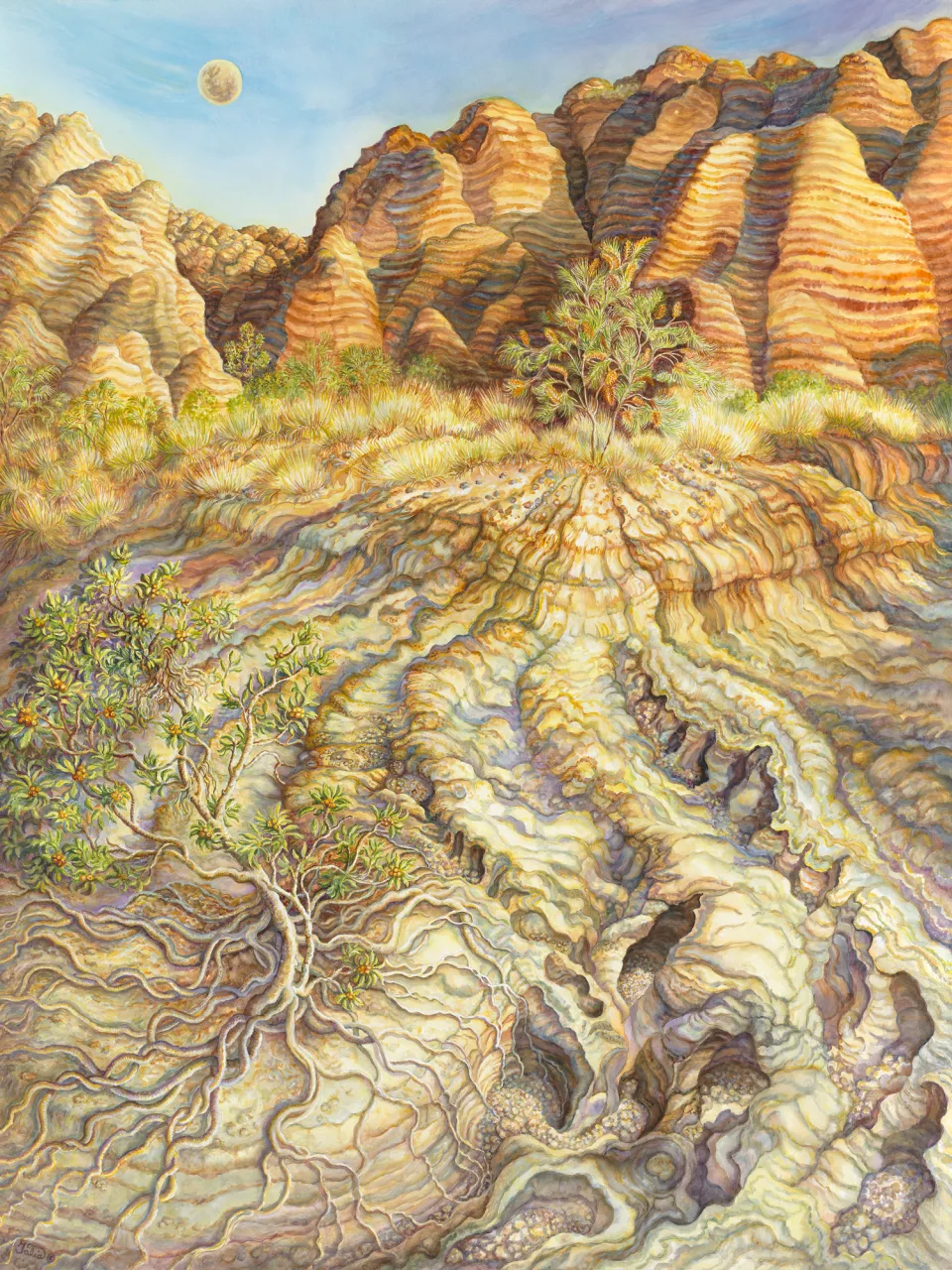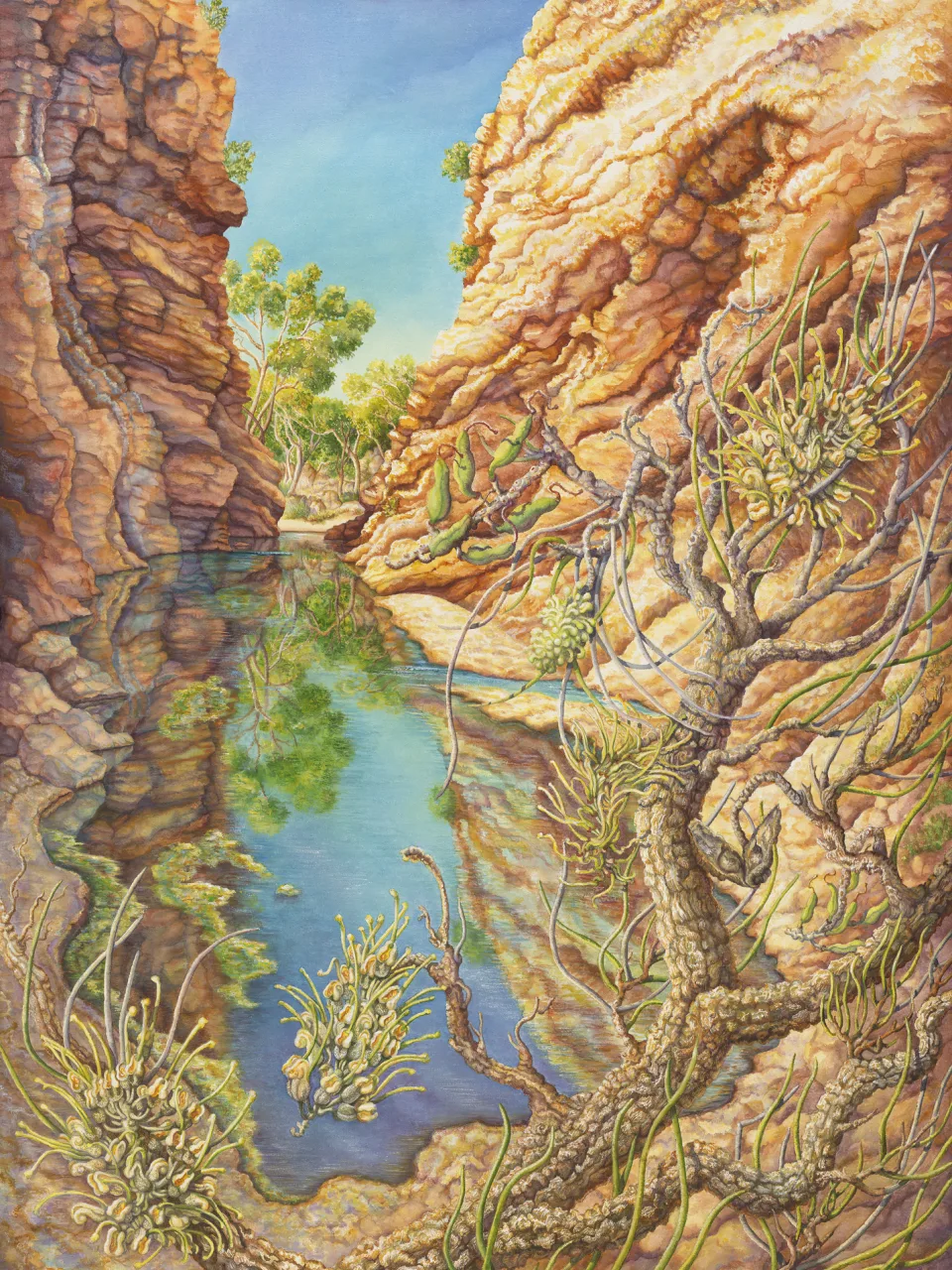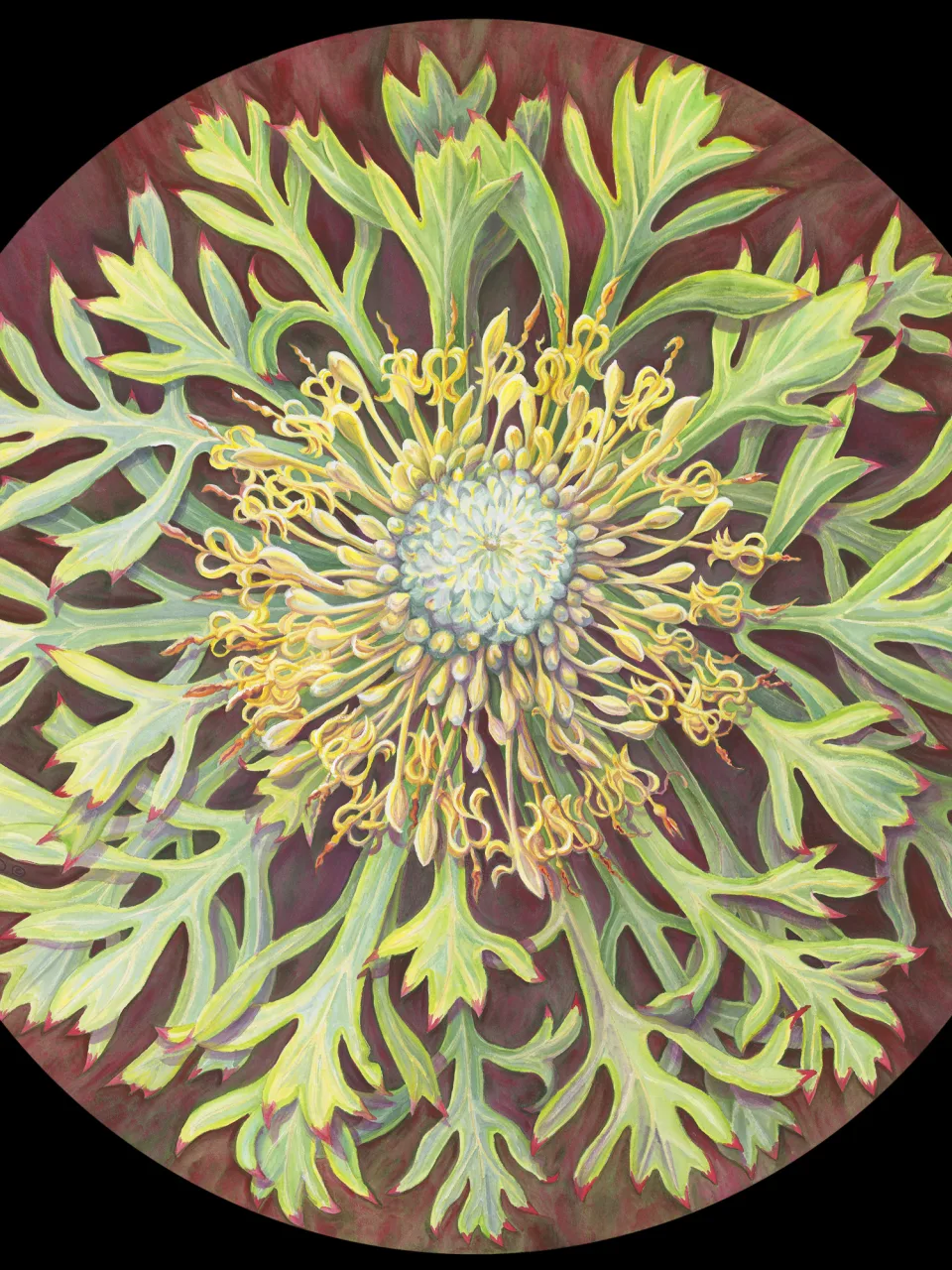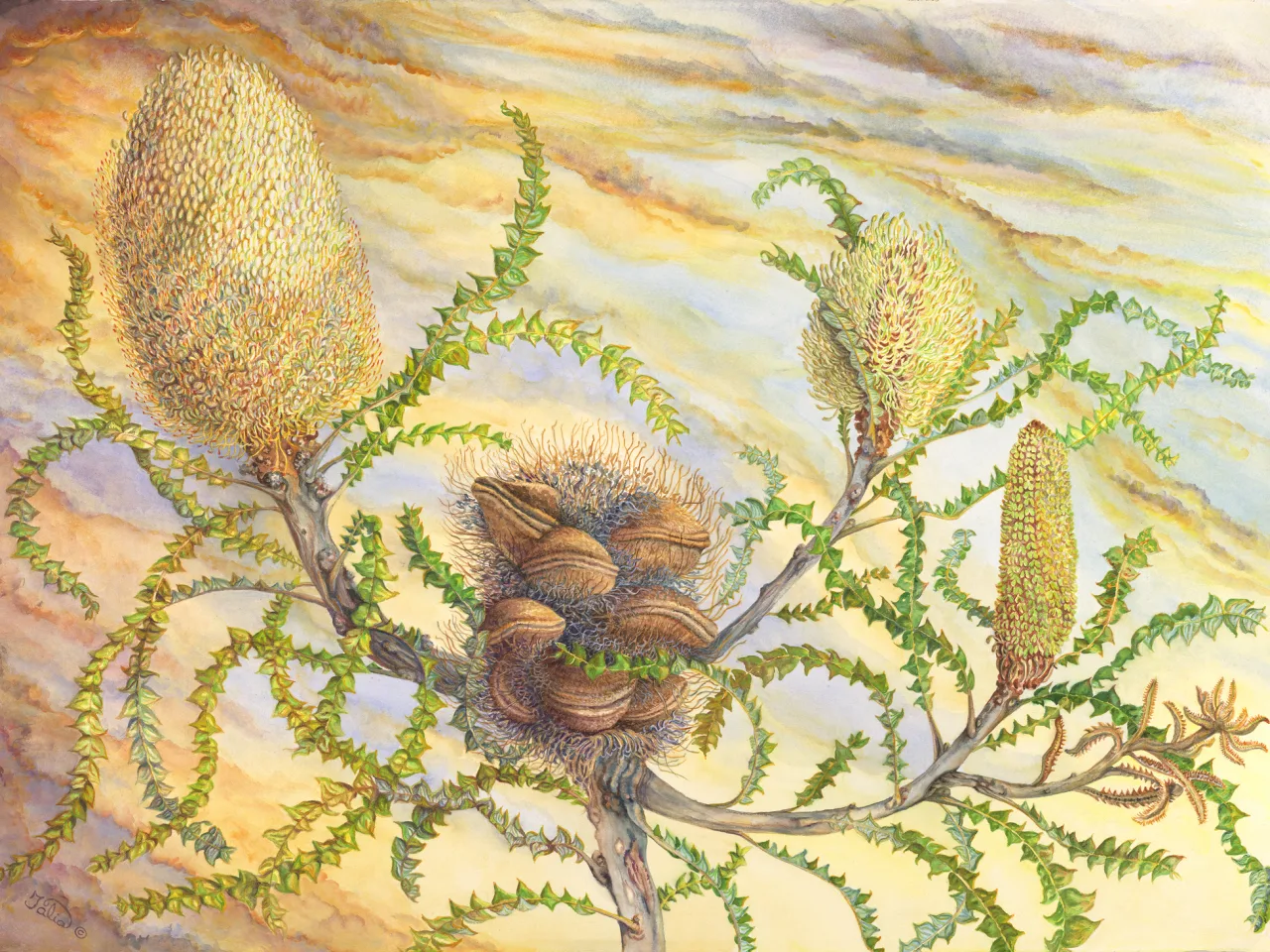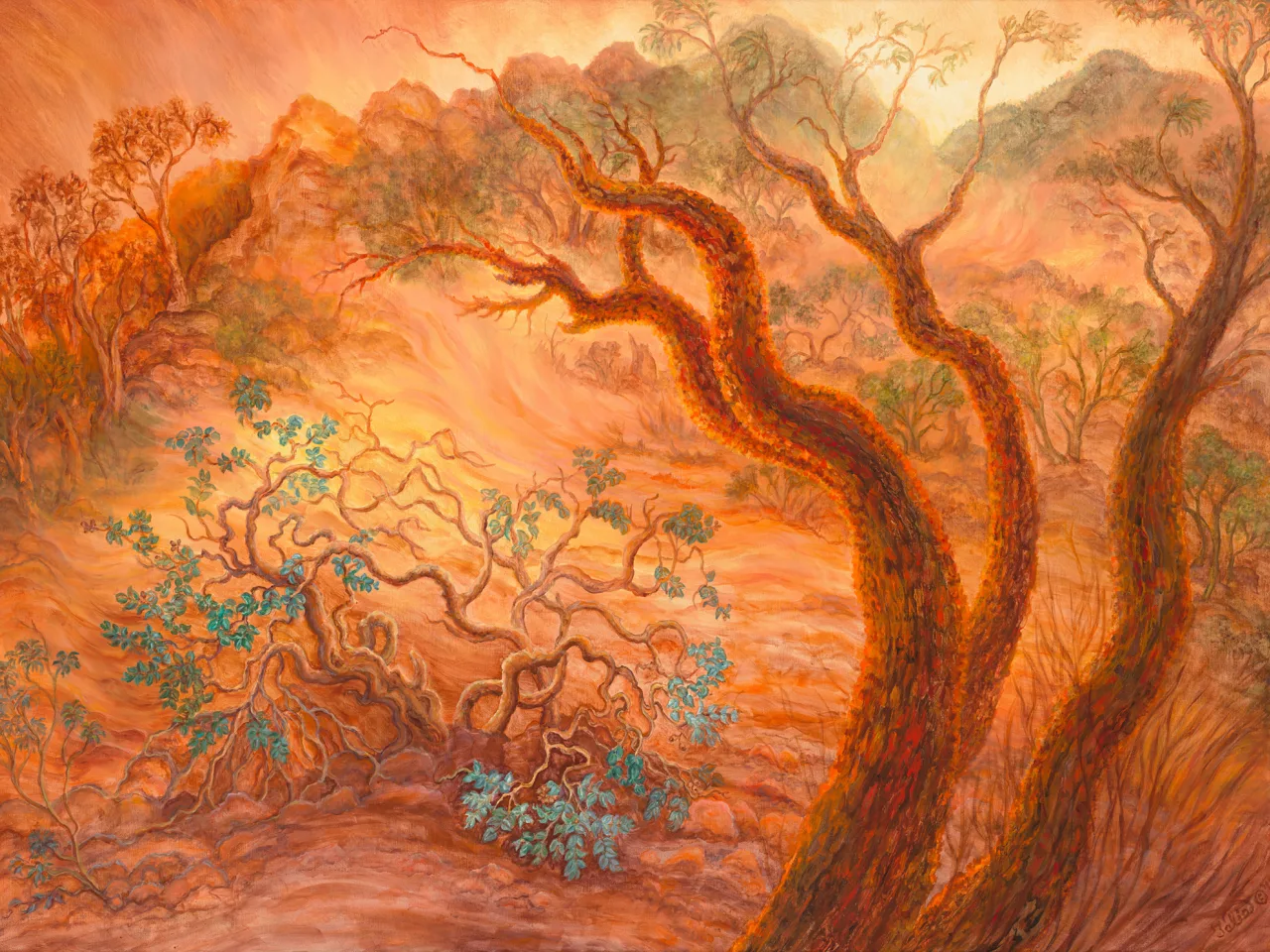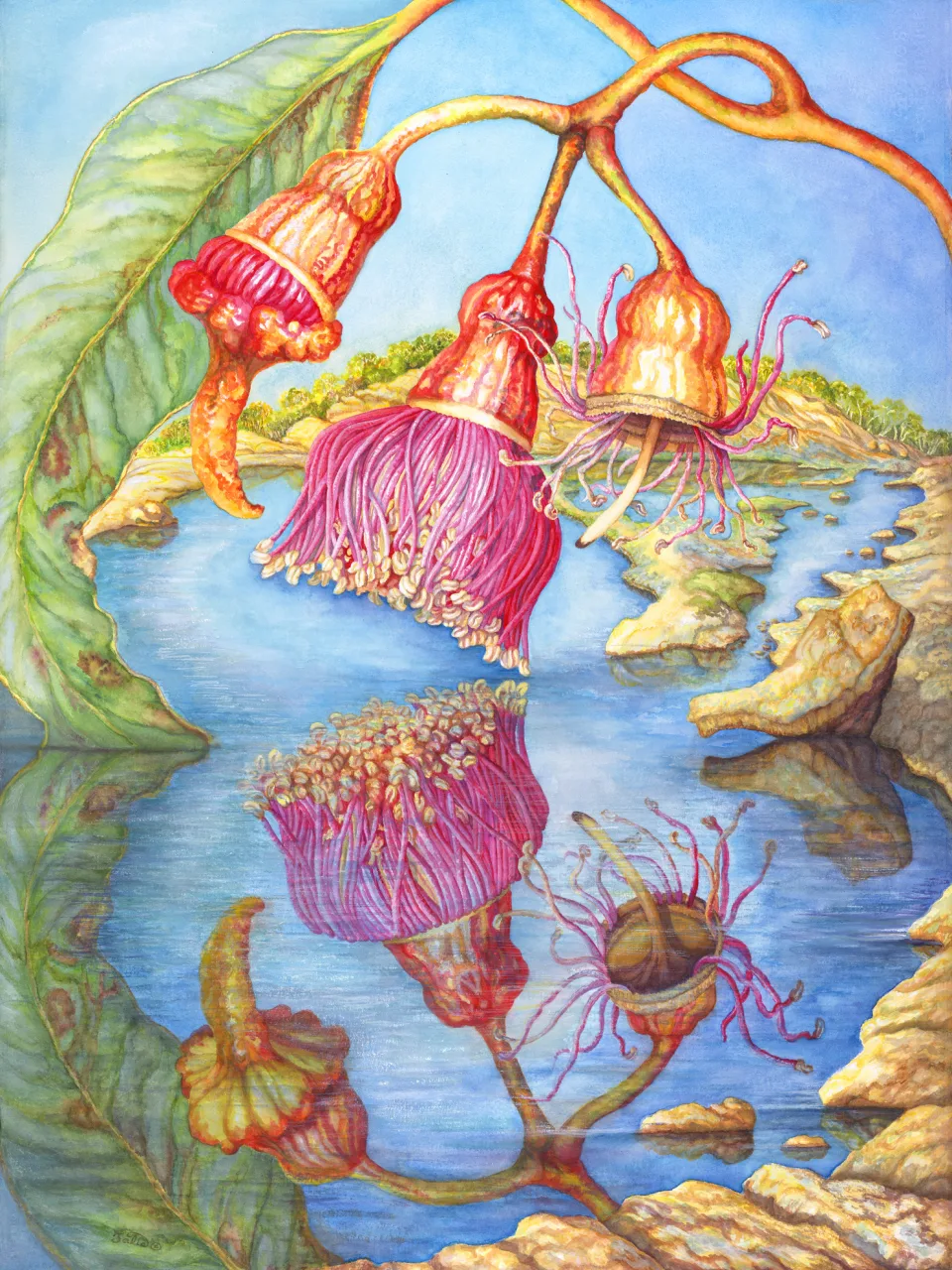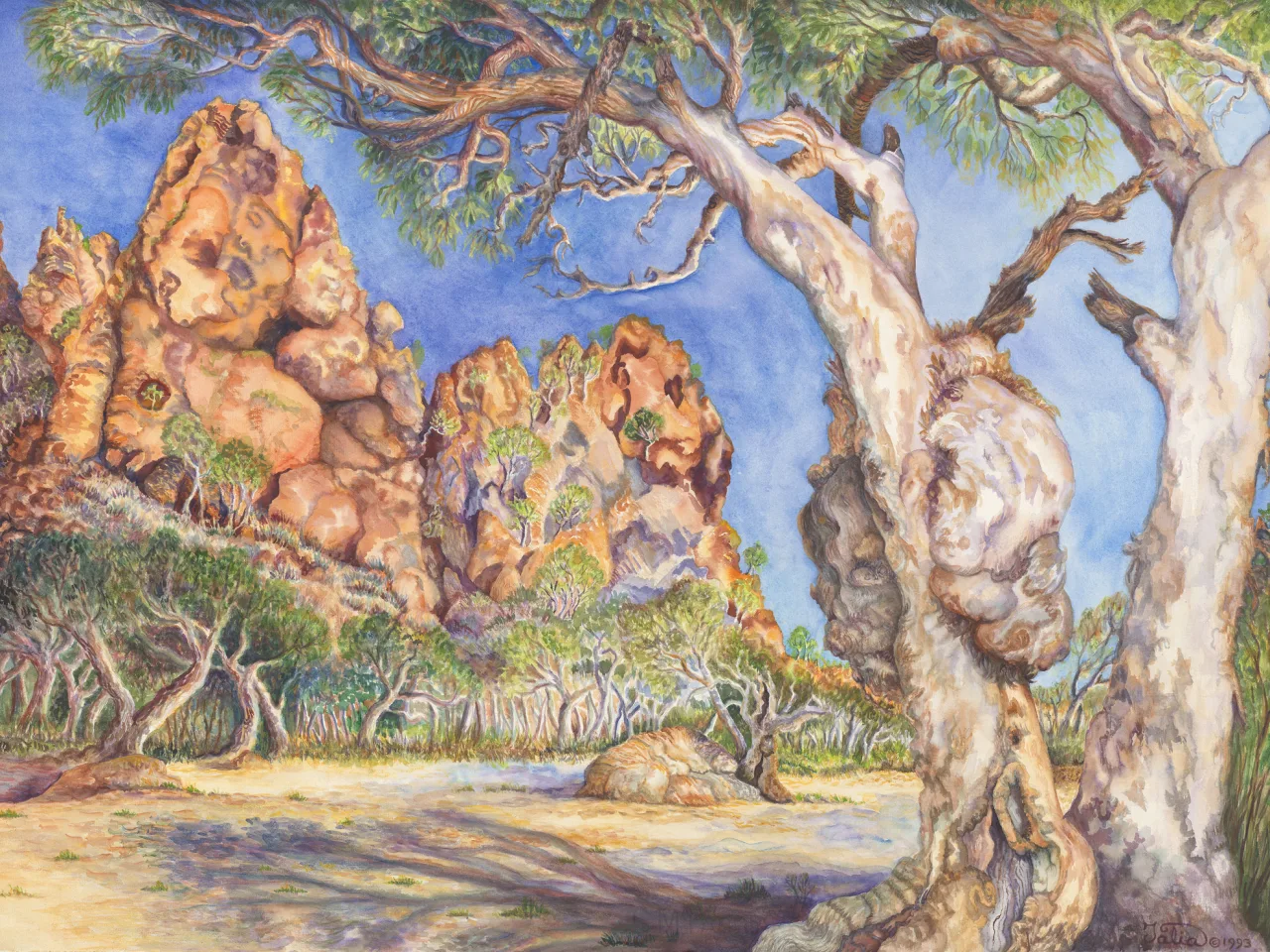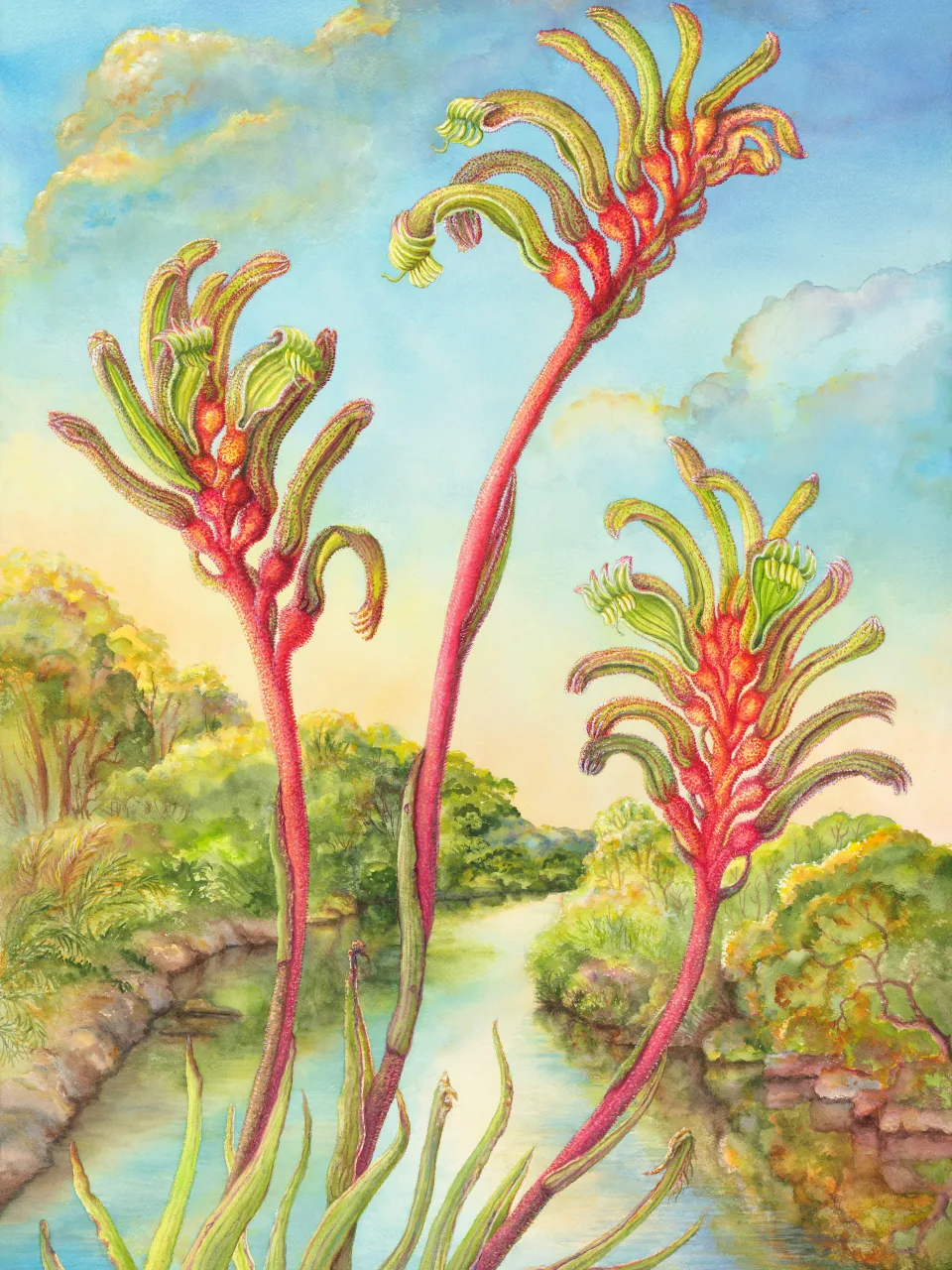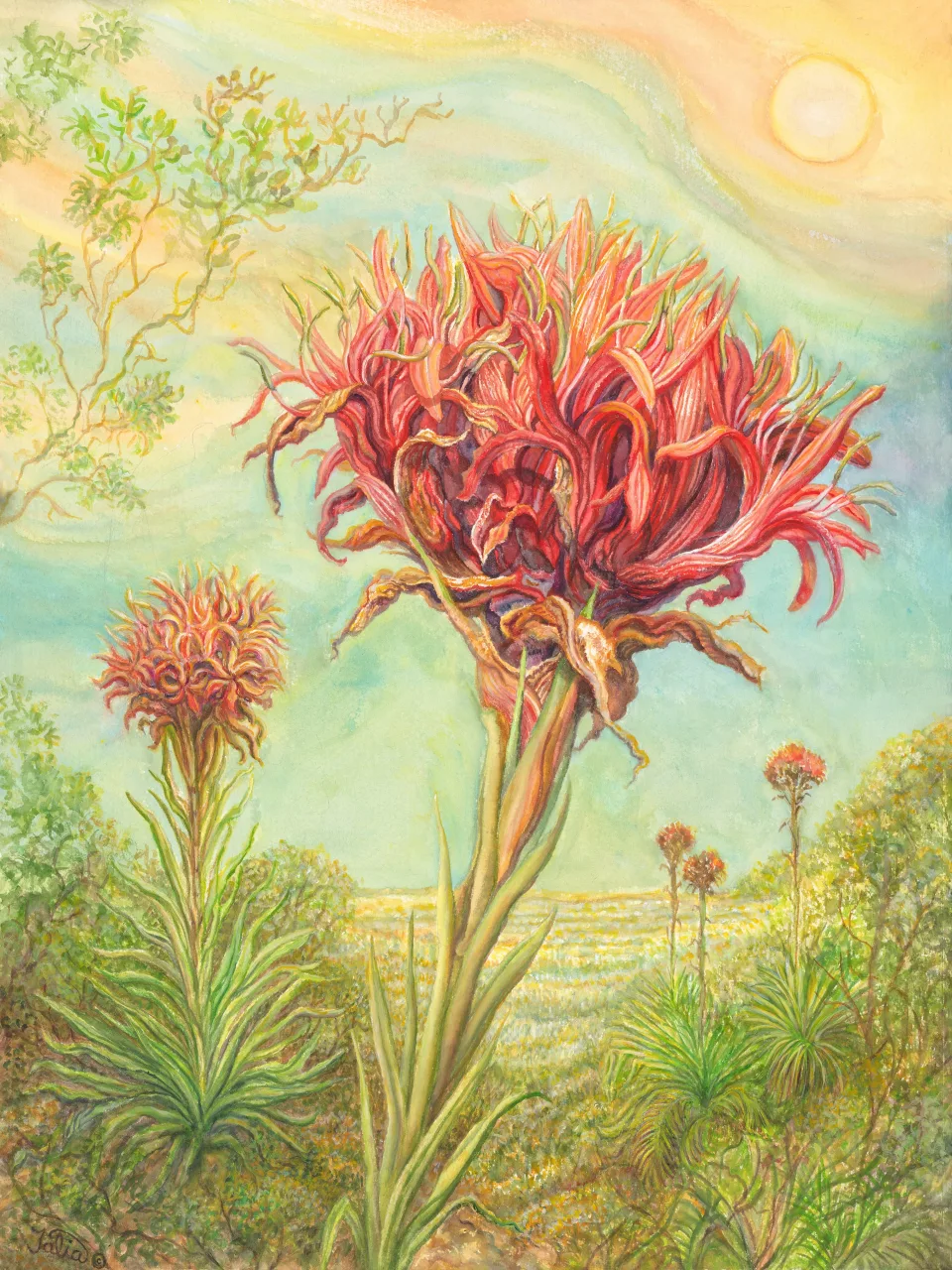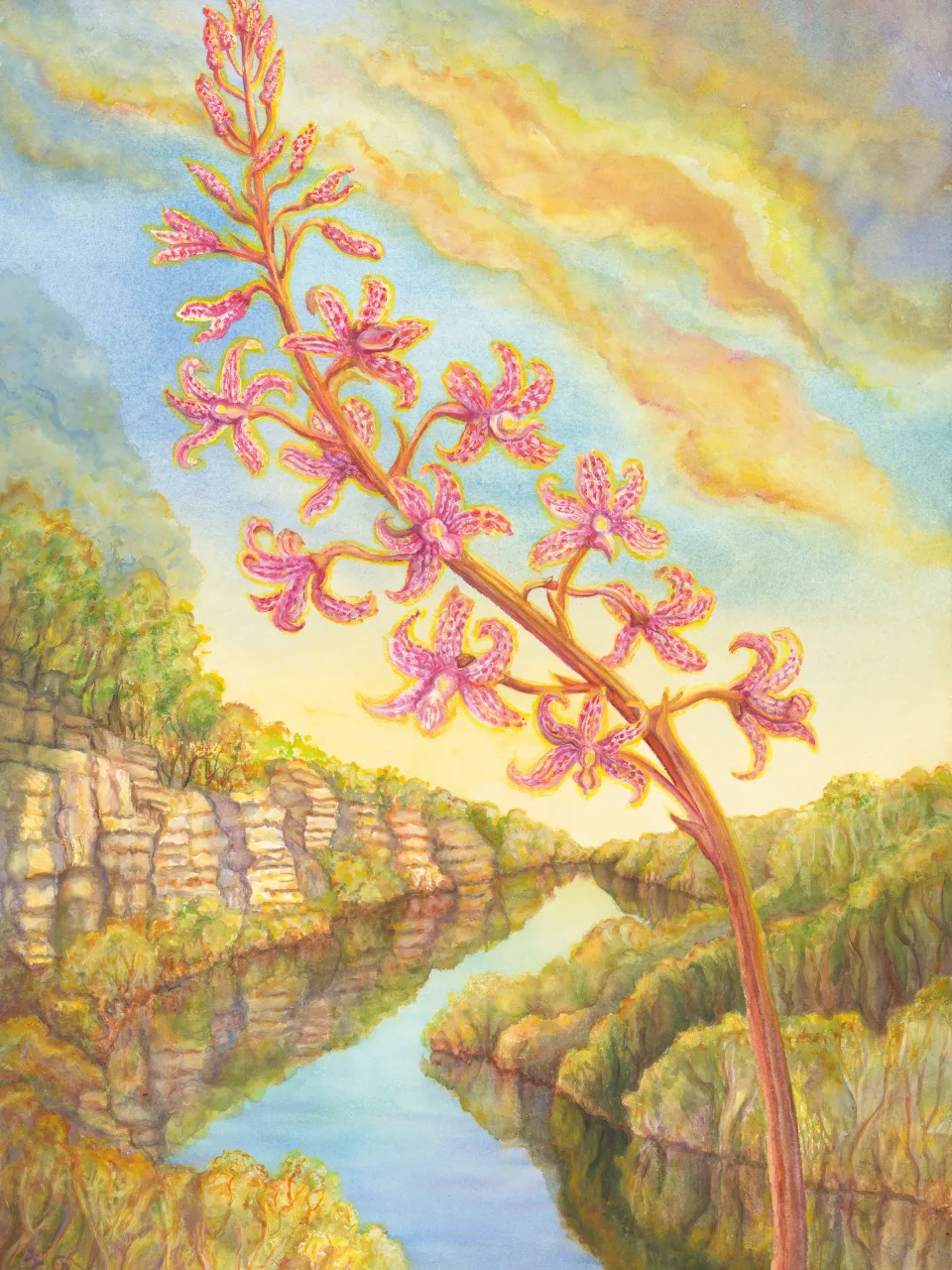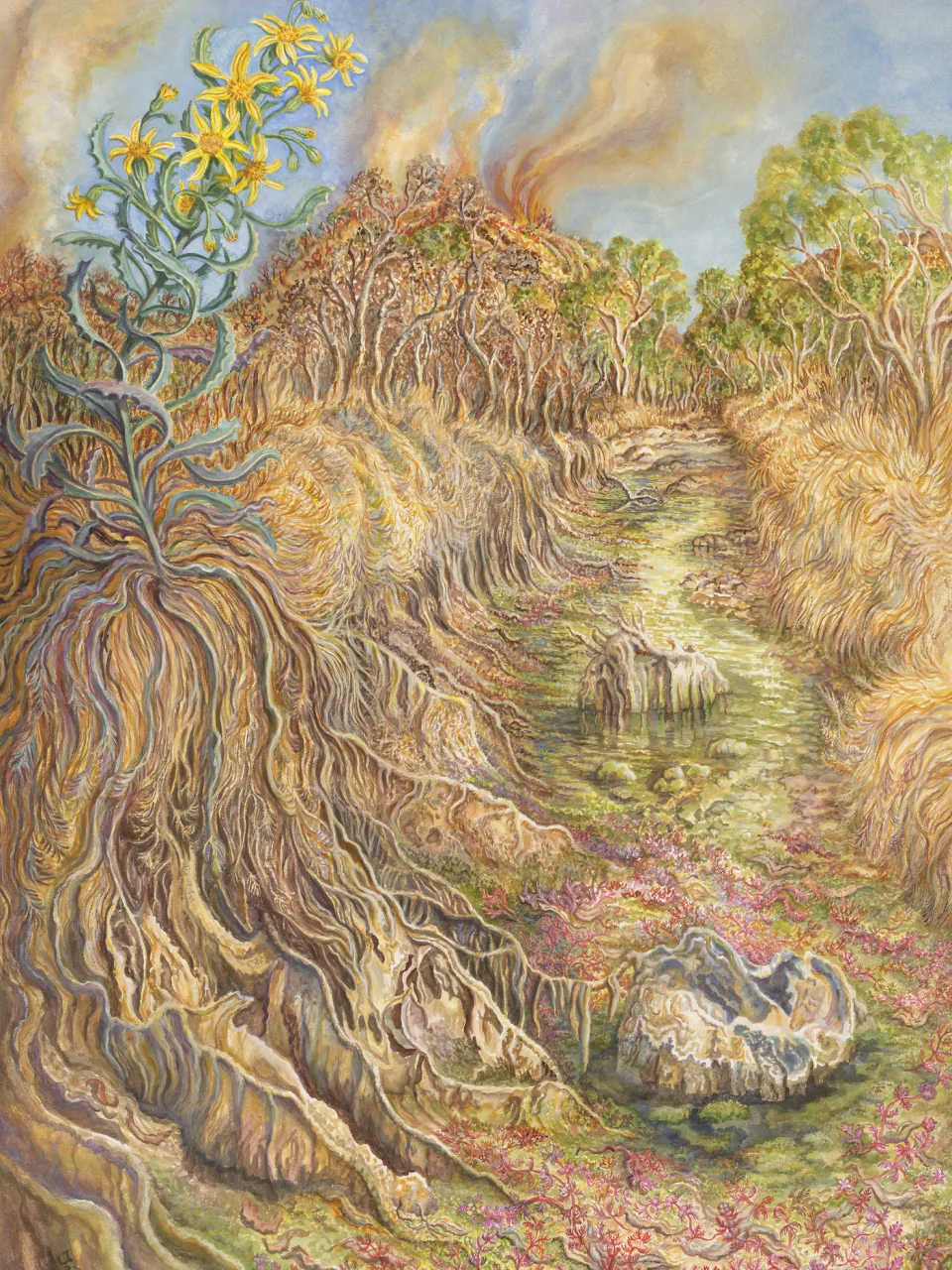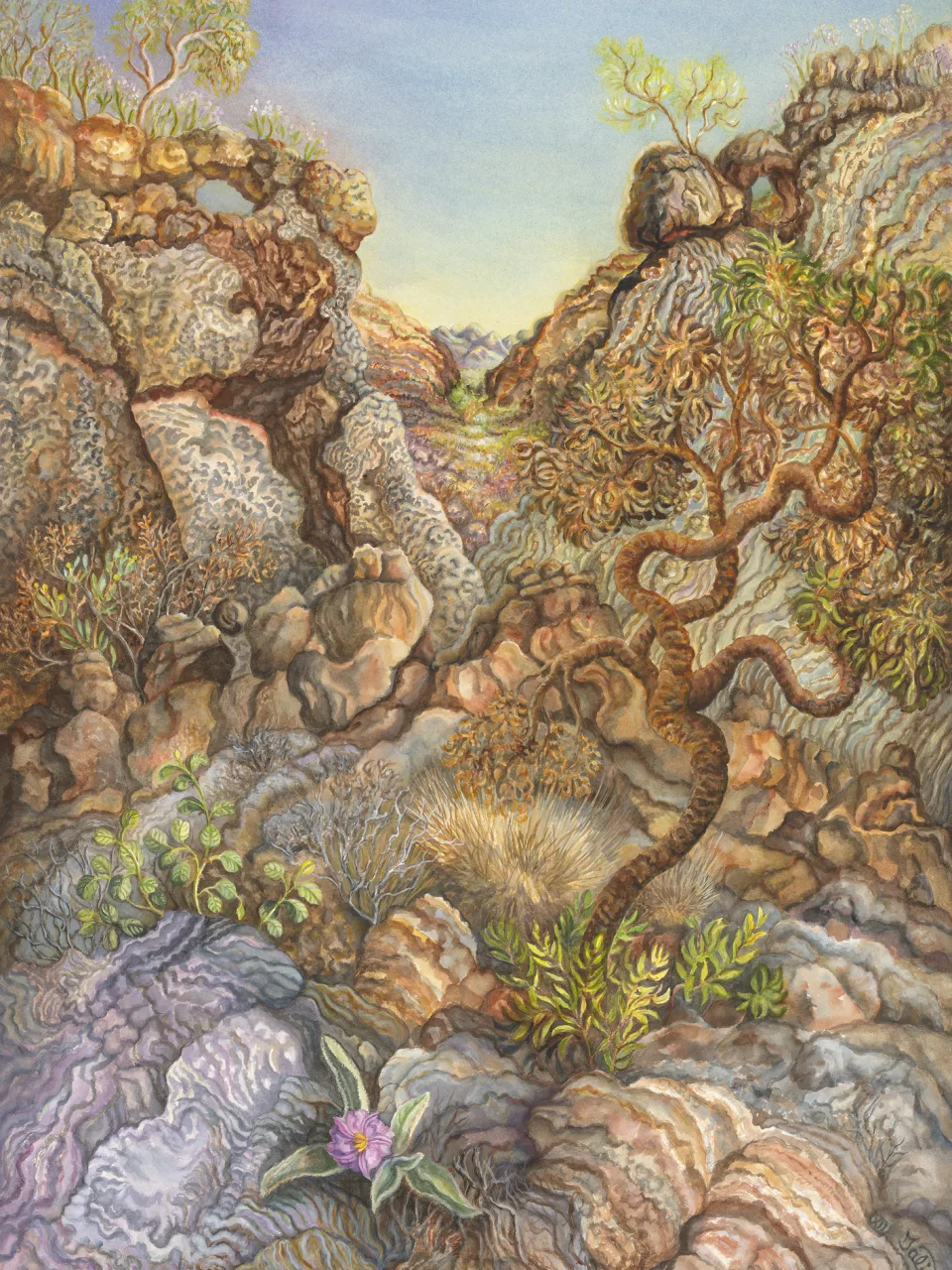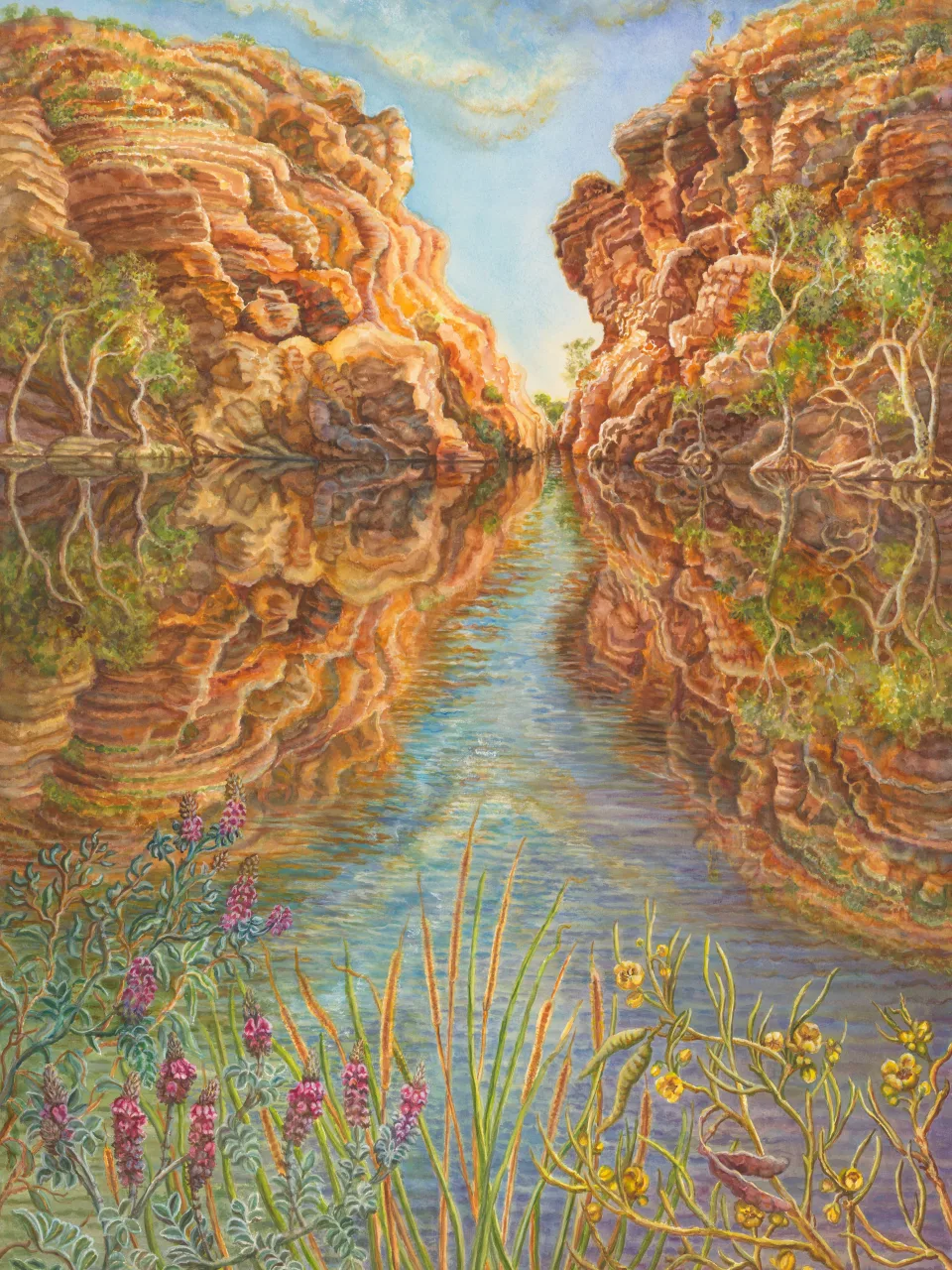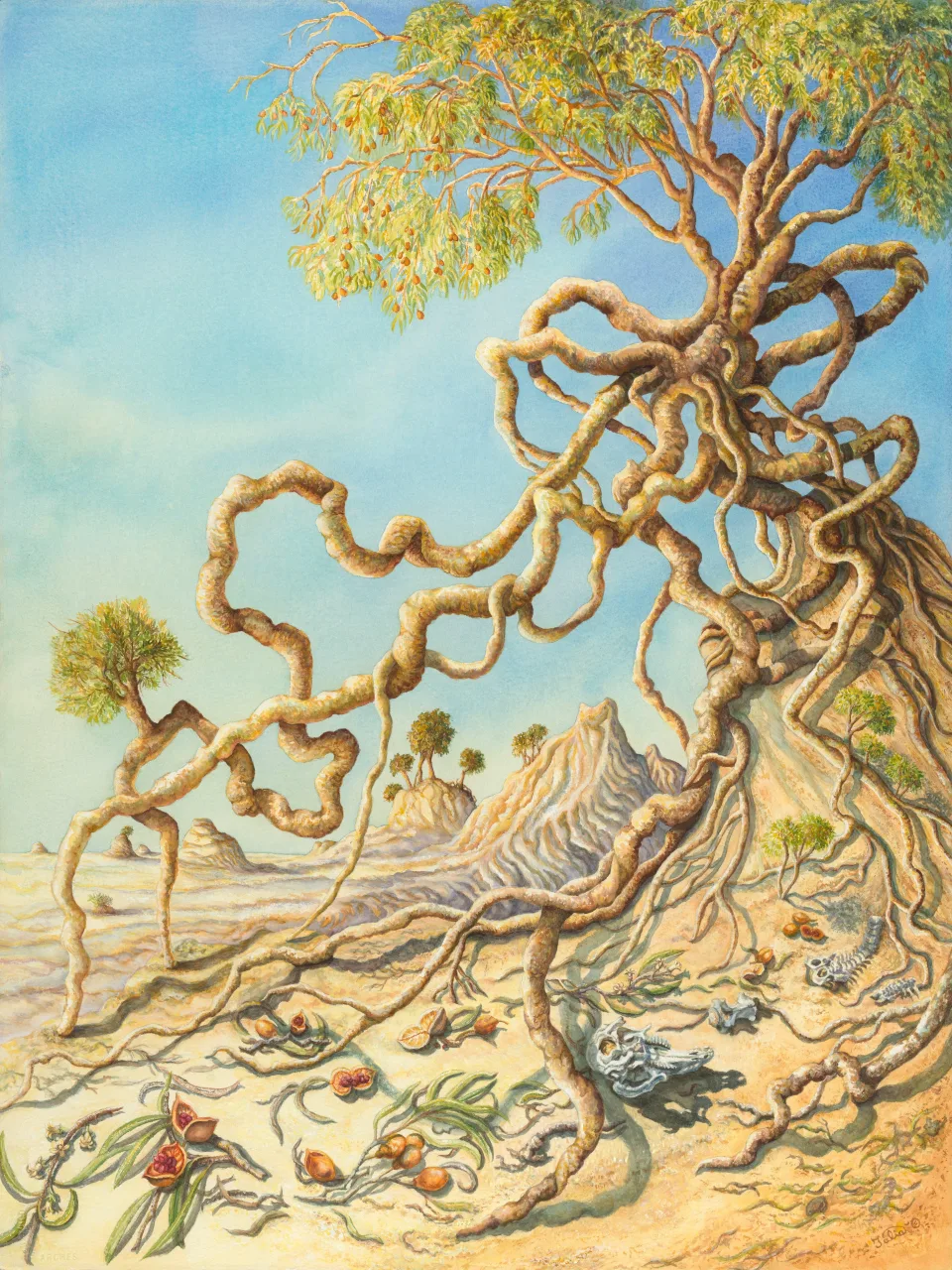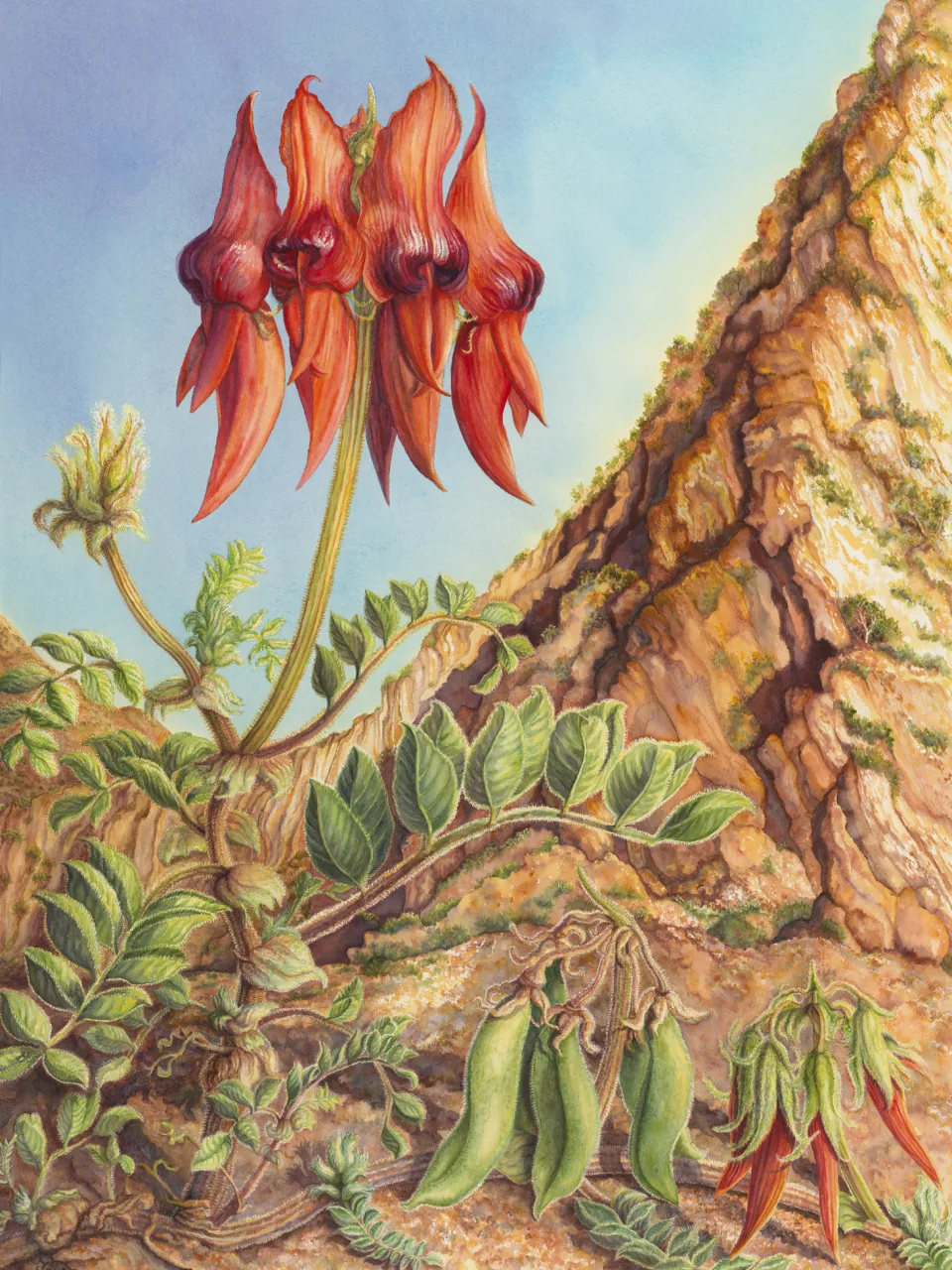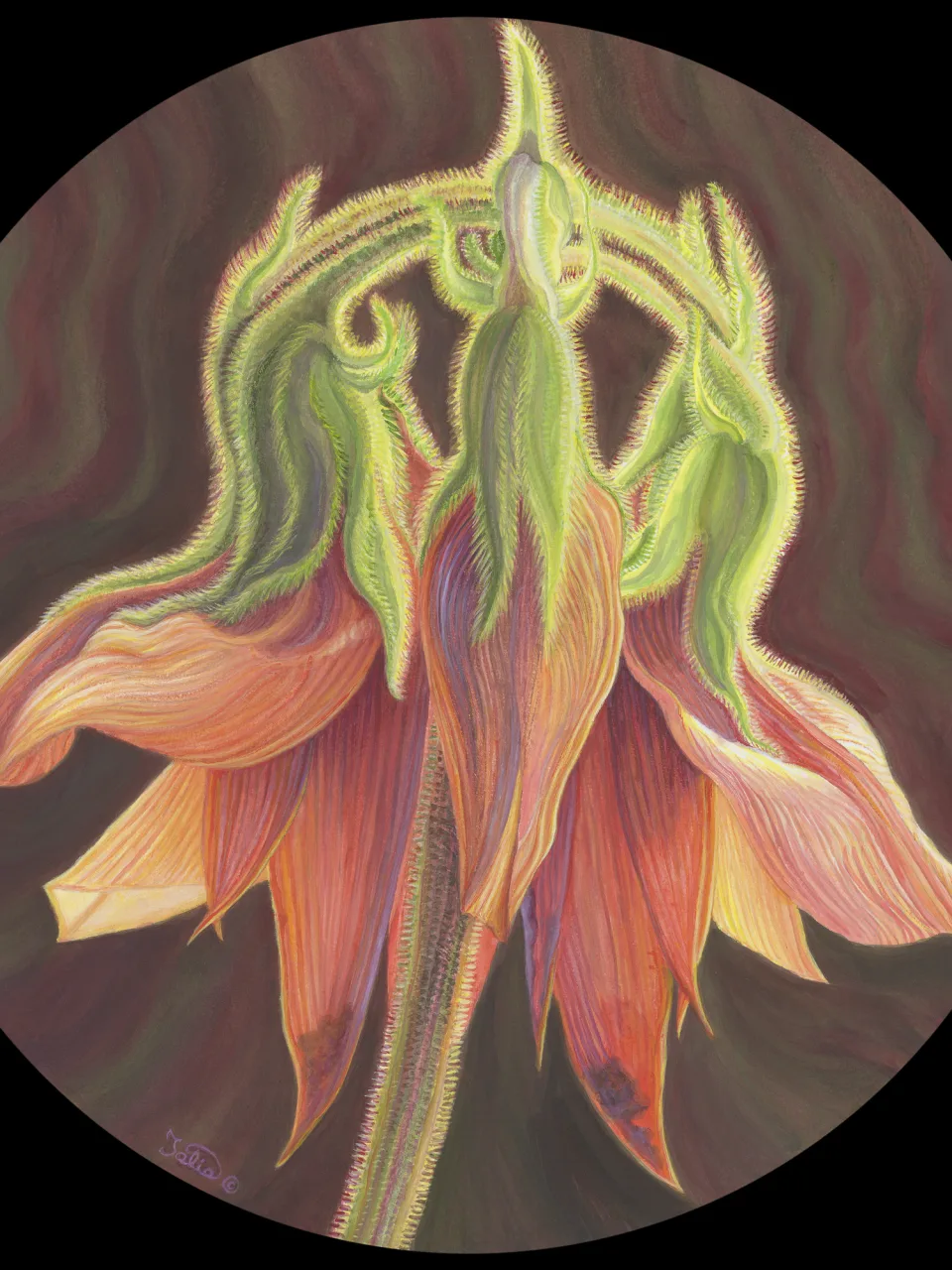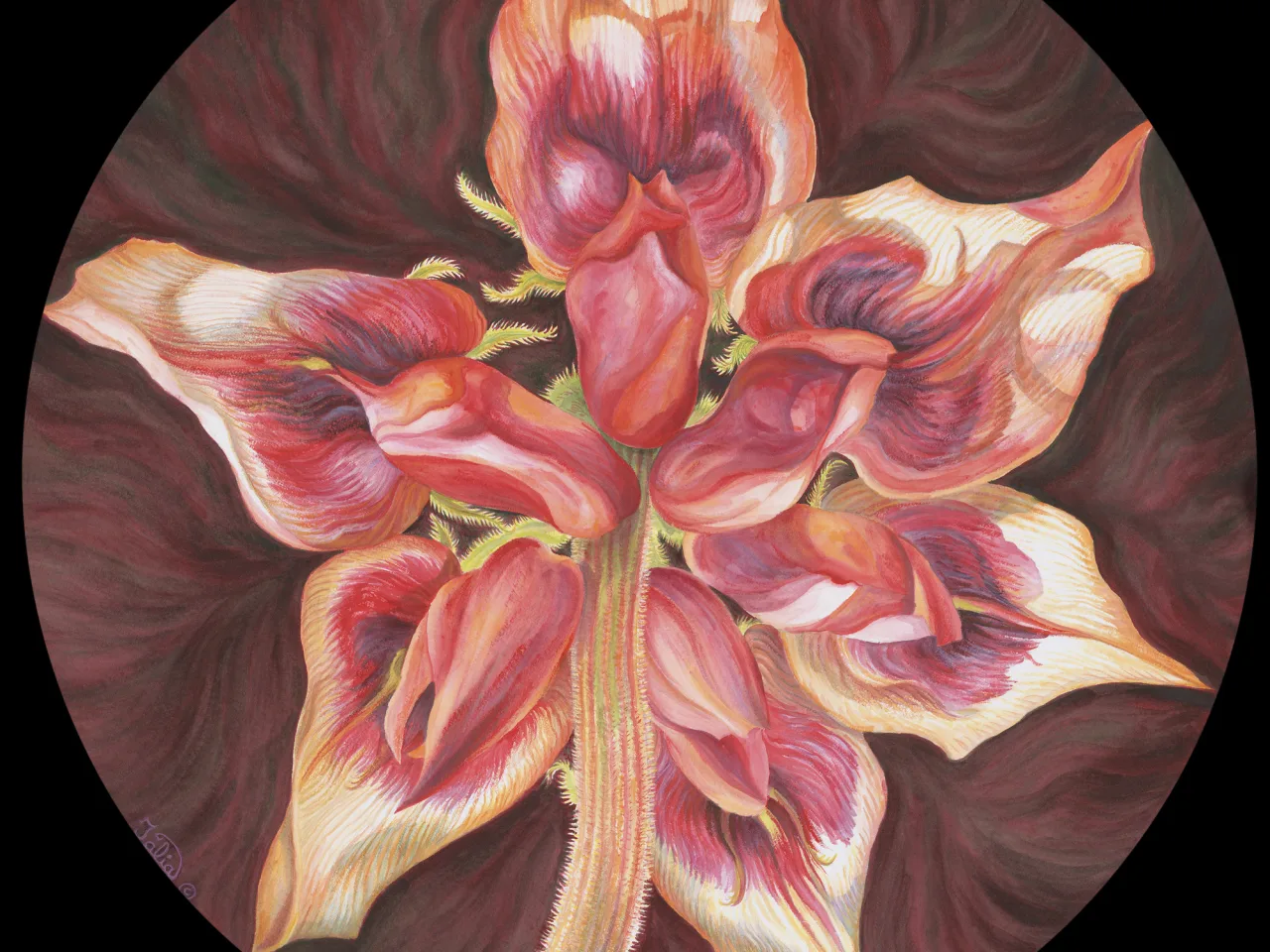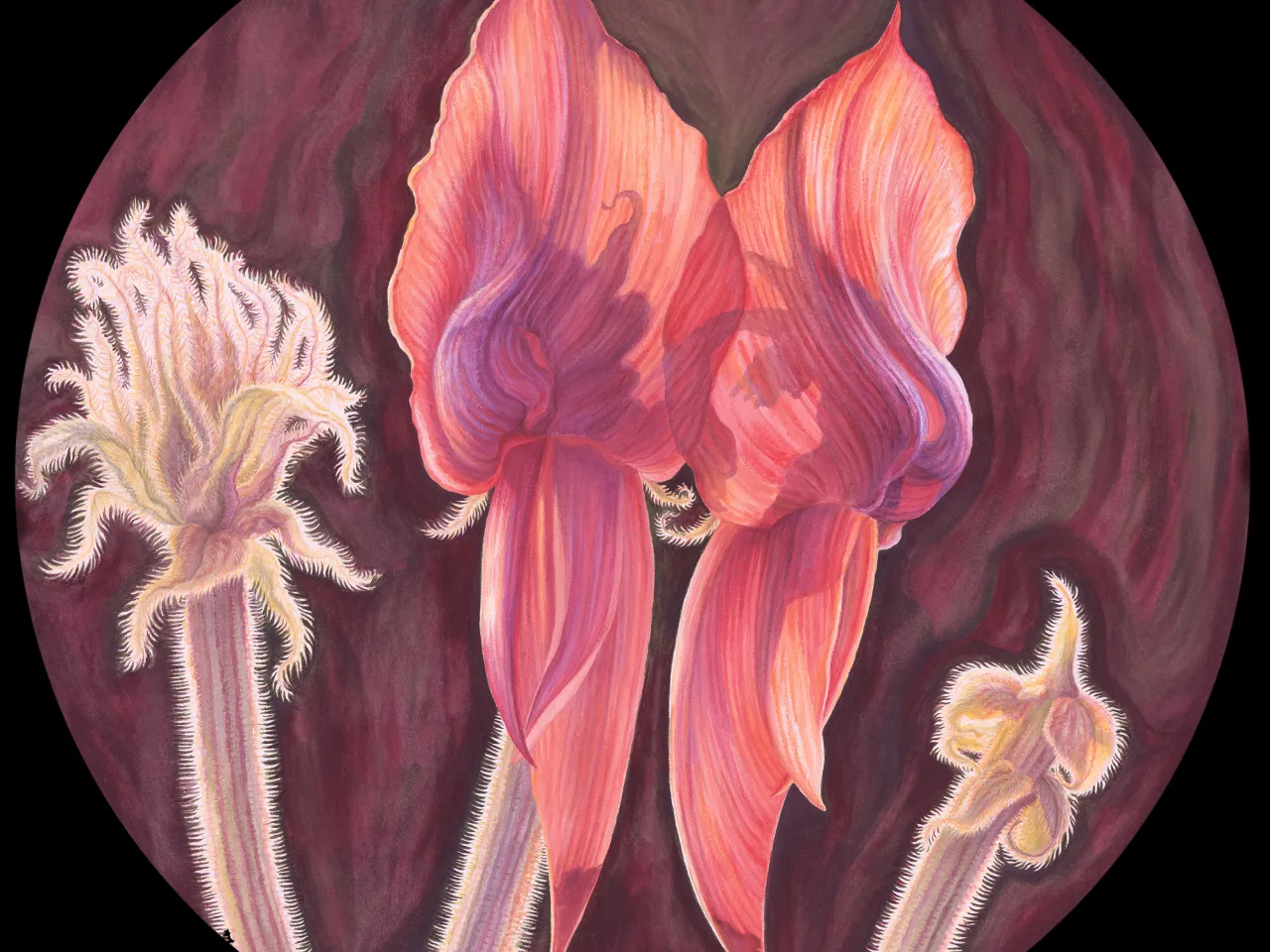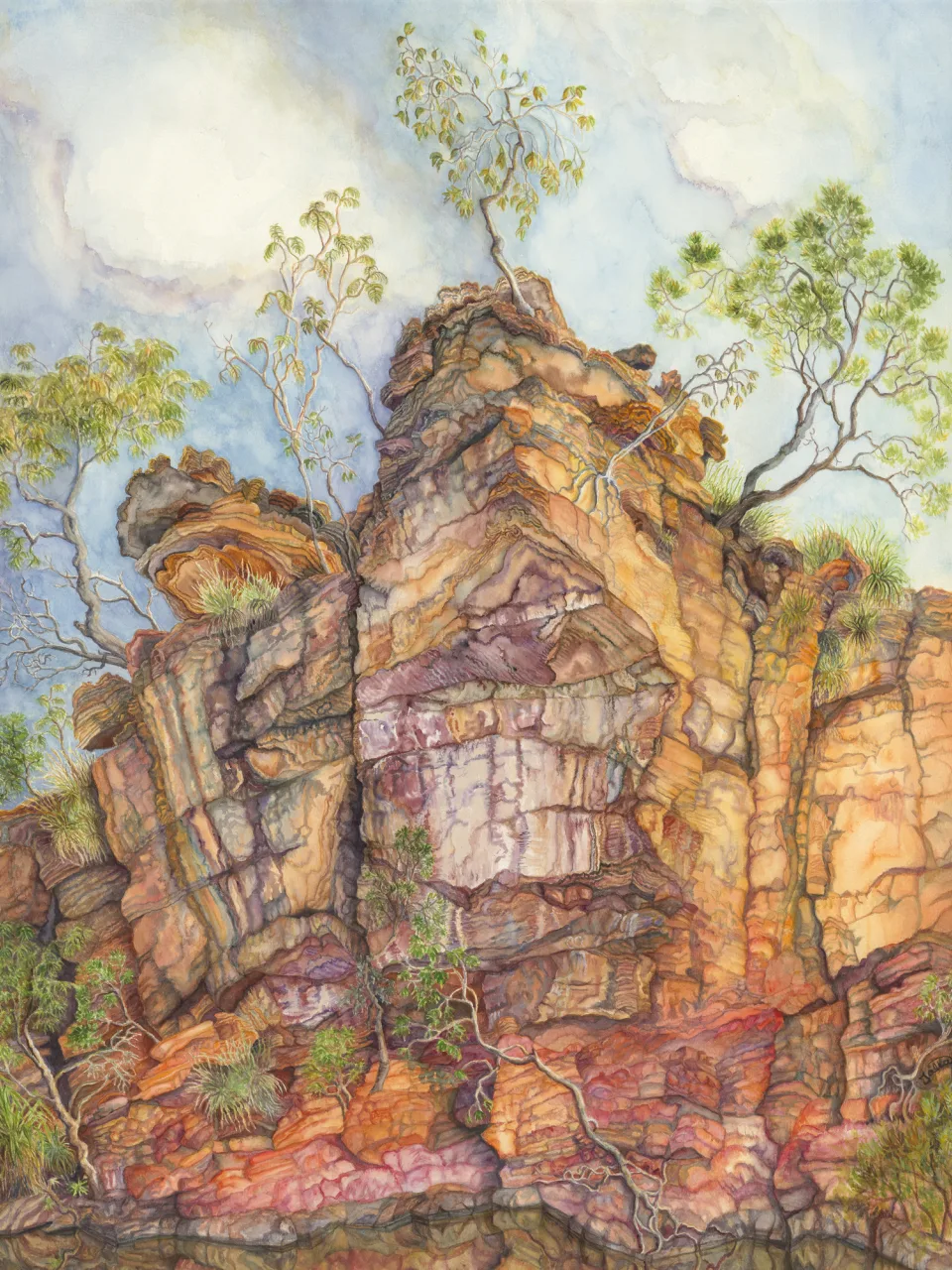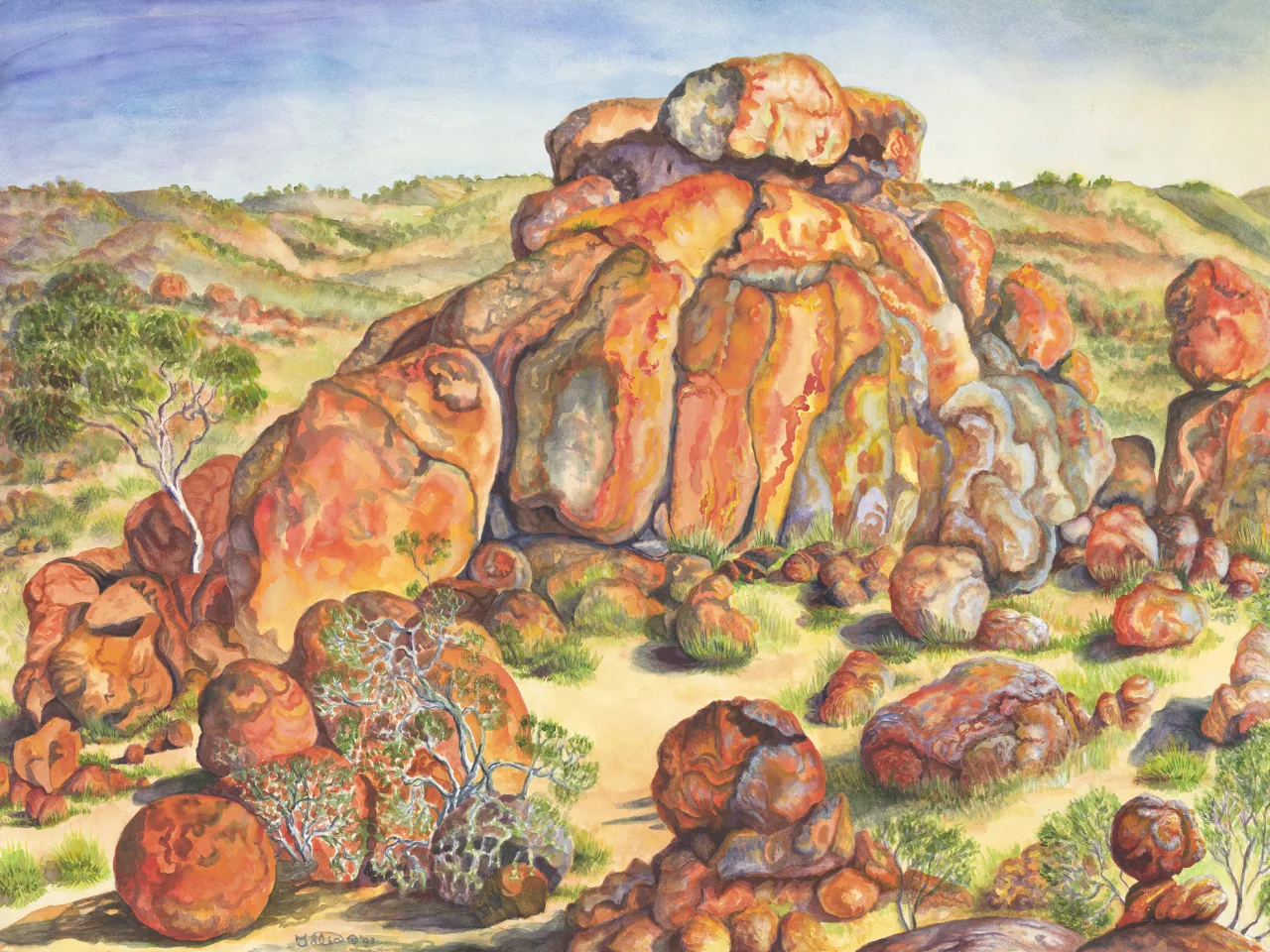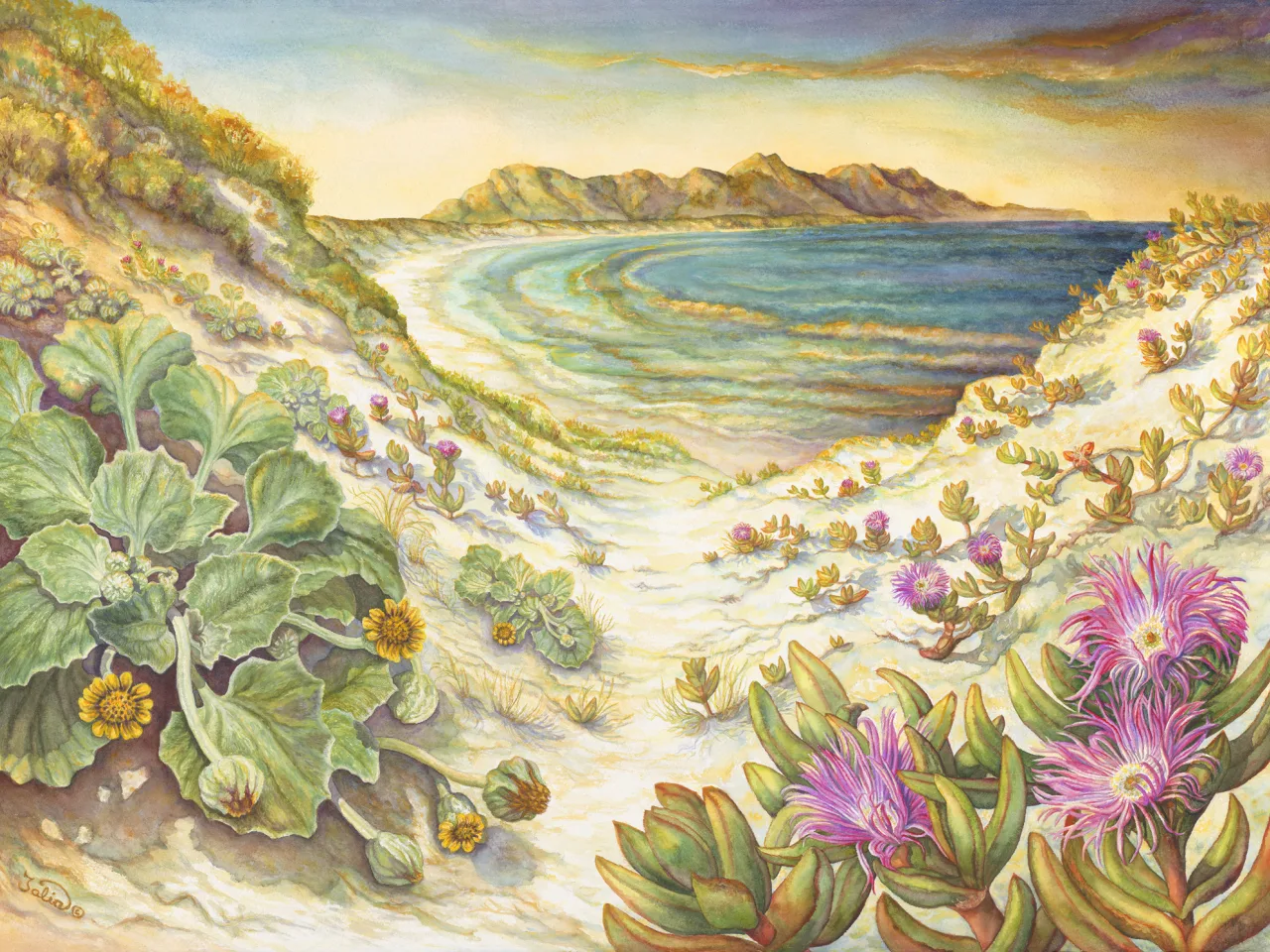Artwork 13 King Billy of the Western Arthurs
Section 10
Other Unique Australian Conifers—Southerners With Ancient Northern Kinship (Cupressaceae Family)
Southwest National Park, Tasmania, Tasmania
- 1. Athrotaxis selaginoides (King Billy pine)
- 2. Nothofagus gunnii (deciduous beech)
- 3. Richea pandanifolia (pandani)
- 4. Richea scoparia (scoparia)
- 5. Tasmannia lanceolata (mountain pepper)
Artwork 13
Buy a print
Limited edition giclee archival quality print on 310 gsm Ilford cotton rag (from an original work in acrylic on canvas, 71 cm high x 51 cm wide)
from the artist
“King Billy” can thrive at high altitude, and often becomes gnarled and twisted by weather and wind, the epitome of “ancient”. It can grow on moist, rocky, alpine slopes as a dramatically stunted and twisted solitary sentinel, perhaps overlooking a glistening tarn in the rugged valley beneath, as in this artwork. Although I was unable to climb to this particular magnificent survivor near Lake Oberon in the Western Arthurs, my son Sven was able to do so. He hiked the Western Arthur Traverse a few days into January 2004, and took great photos for me to use for this painting.
Now found only in Tasmania, the ancestors and relatives of Arthrotaxis had spread to many parts of Australia, as testified by the discovery of fossil twigs and cones dated about one hundred million years old discovered in the Winton Formation of Central Queensland. They were accompanied by a variety of conifers such as Araucarians and ginkgoes, as well as ferns and about eight species of angiosperms. This presents fascinating early macrofossil evidence of the transition from gymnosperms to angiosperm dominance (Hill et al., 1999).
In the alpine areas, “King Billy” is often accompanied by Australia’s rare deciduous beech, Nothofagus gunnii, which is endemic to Tasmania. This is our only native tree with leaves that change colour—to a glowing golden red each autumn—after which they drop off completely. It is low growing, often in pure stands, so it is spectacular to see. This plant appears in the artwork just below “King Billy”.
Another interesting plant in the artwork is Tasmania’s ancient mountain pepper—Tasmannia lanceolata—a very early flowering plant.
The final plants depicted in this painting belong to the Richeas (“southern heaths”) of Tasmania—more survivors from Gondwanaland. On the left are several Richea pandanifolia plants, which can grow to 12 m in height (though not so high in alpine conditions). Their long leaves—up to about a metre in length—form a crown and skirt below the crown as they die, so they appear out of the mists like green-haired ghosts. Their smaller companions on the right are Richea scoparia.
